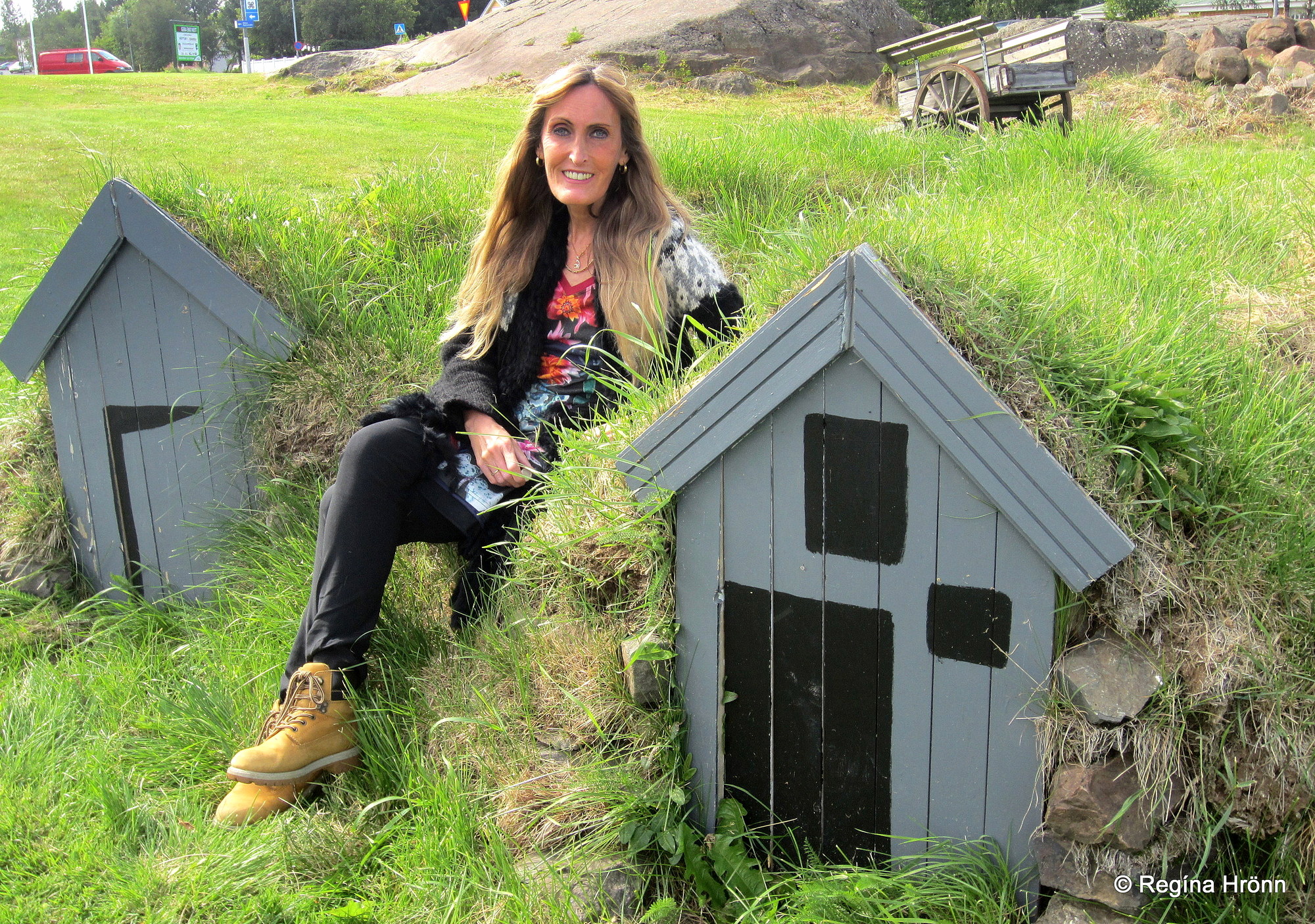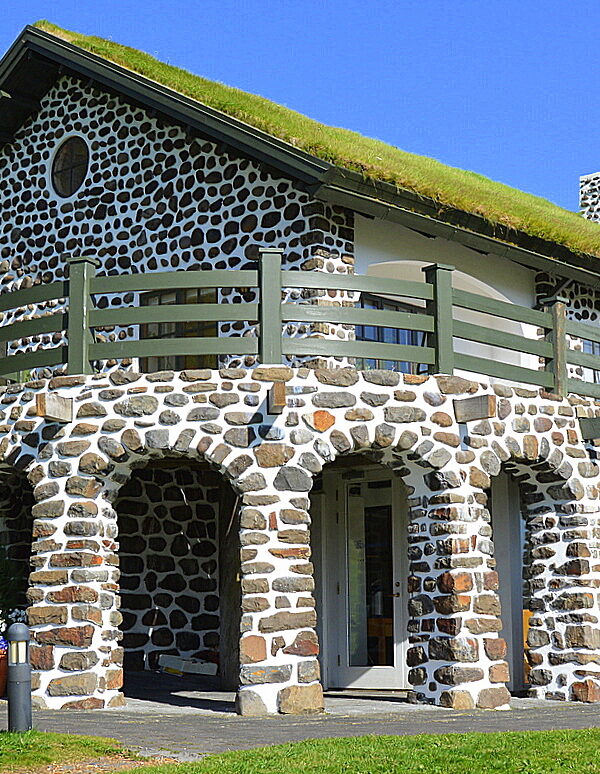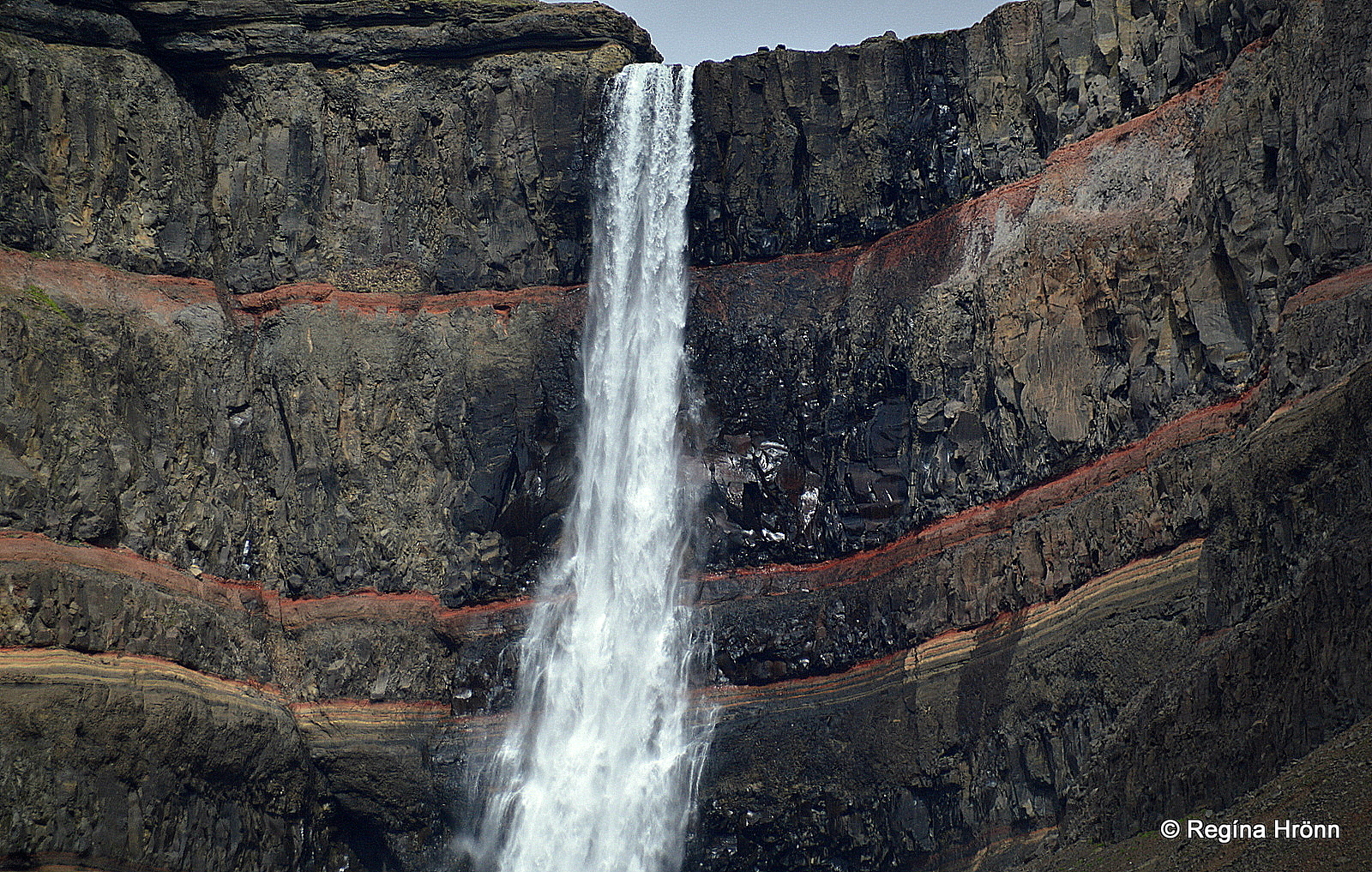
Hengifoss – the Pearl of Fljótsdalur
In my last travel-blogs I have been showing you places of interest in the Eastfjords of Iceland.
We visited the beautiful fjords in Fjarðabyggð and by now we have reached Fljótsdalur valley and the largest town in East Iceland, Egilsstaðir in the Fljótsdalshérað area.


Vök baths
We are going to visit lovely geothermal baths, Iceland’s largest forest, Iceland’s second tallest waterfall, one of the most beautiful buildings in Iceland, turf outhouses, and many more interesting places.
And we might even spot Lagarfljótsormurinn – Iceland’s Loch Ness, who knows, anything can happen 🙂
Egilsstaðir town
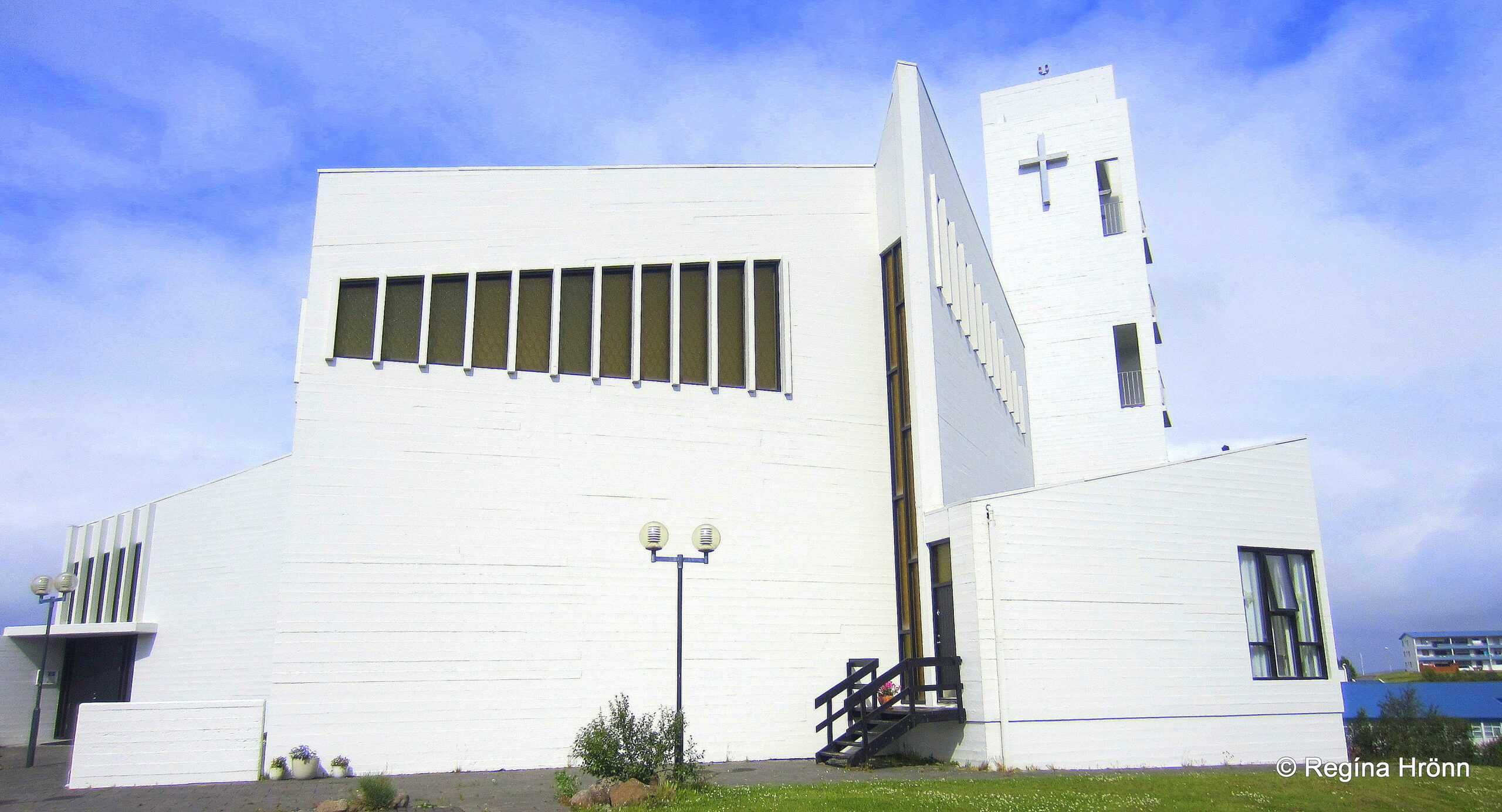

Egilsstaðakirkja church
Egilsstaðir town is a service center for the region. In this lovely town, which was established as late as 1947, you will find many shops, hotels and guesthouses, restaurants, a college, and a hospital.
The first house in Egilsstaðir was built in 1944 at what the owner said would be crossroads. He was right for sure.
Egilsstaðir is a bit different from the towns and villages I have been showing you in East Iceland, as it is inland and doesn’t stand by the sea, but on the banks of a large glacial river called Lagarfljót river.
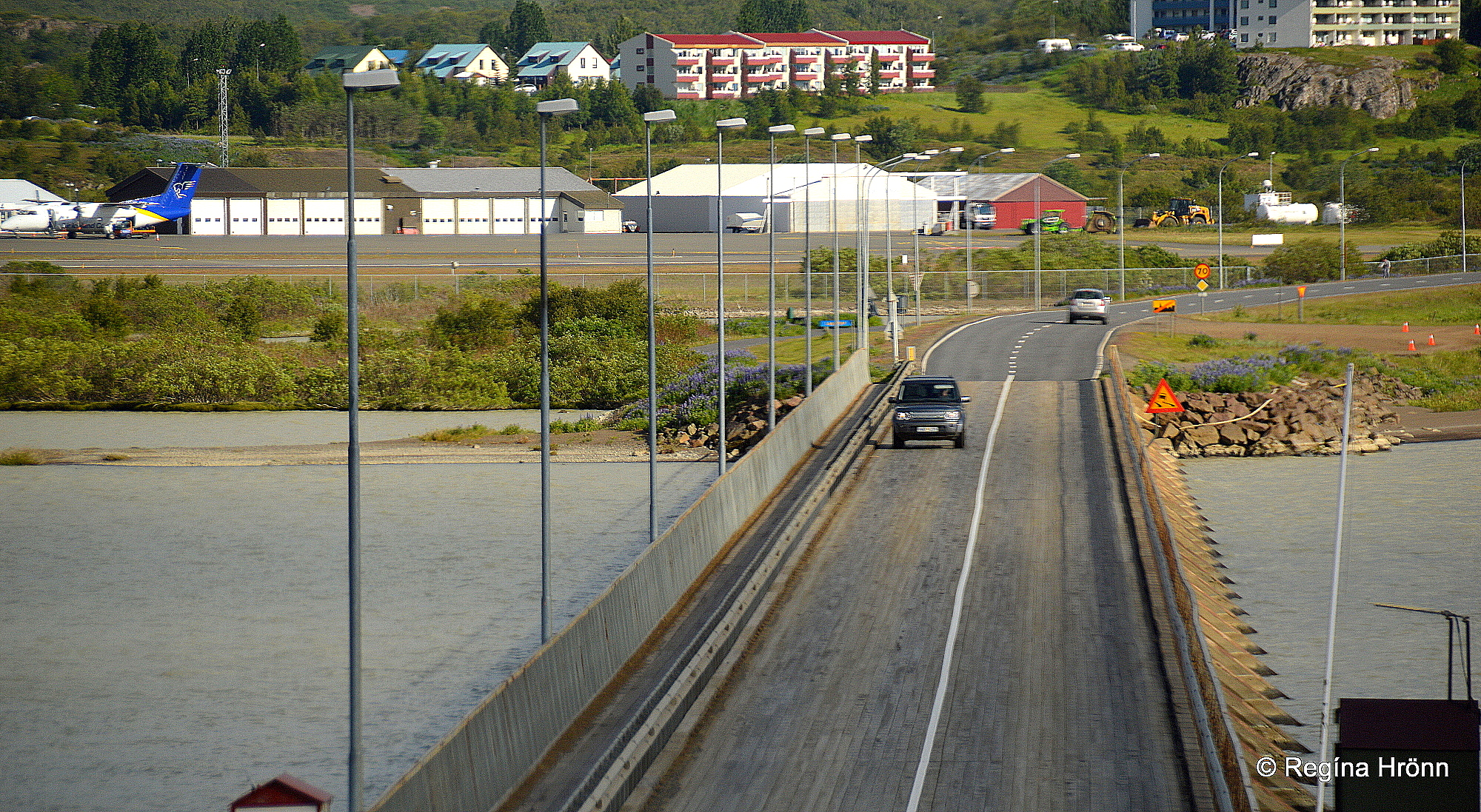

The bridge connecting Egilsstaðir and Fellabær
On the other side of Lagarfljót, across the bridge, Fellabær, the twin town of Egilsstaðir, is located. The population of Fellabær and Egilsstaðir combined is approx. 3,000.
Egilsstaðir has got an airport with daily flights to Reykjavík, the capital city of Iceland.
Here we are as far away from Reykjavík as is possible on ring-road 1, approx. 700 km if we drive anti-clockwise like we have been doing, so it is convenient being able to fly to Egilsstaðir.
The Kárahnjúkar hydropower plant, the dam of which I showed you in my travel-blog: the spectacular Stuðlagil canyon – the Gem of East Iceland contributed further to the growth of the town.
The museum in Egilsstaðir is Minjasafn Austurlands – the East Iceland Heritage Museum, where you can f.ex. learn about how the reindeer became a part of Iceland’s wildlife.
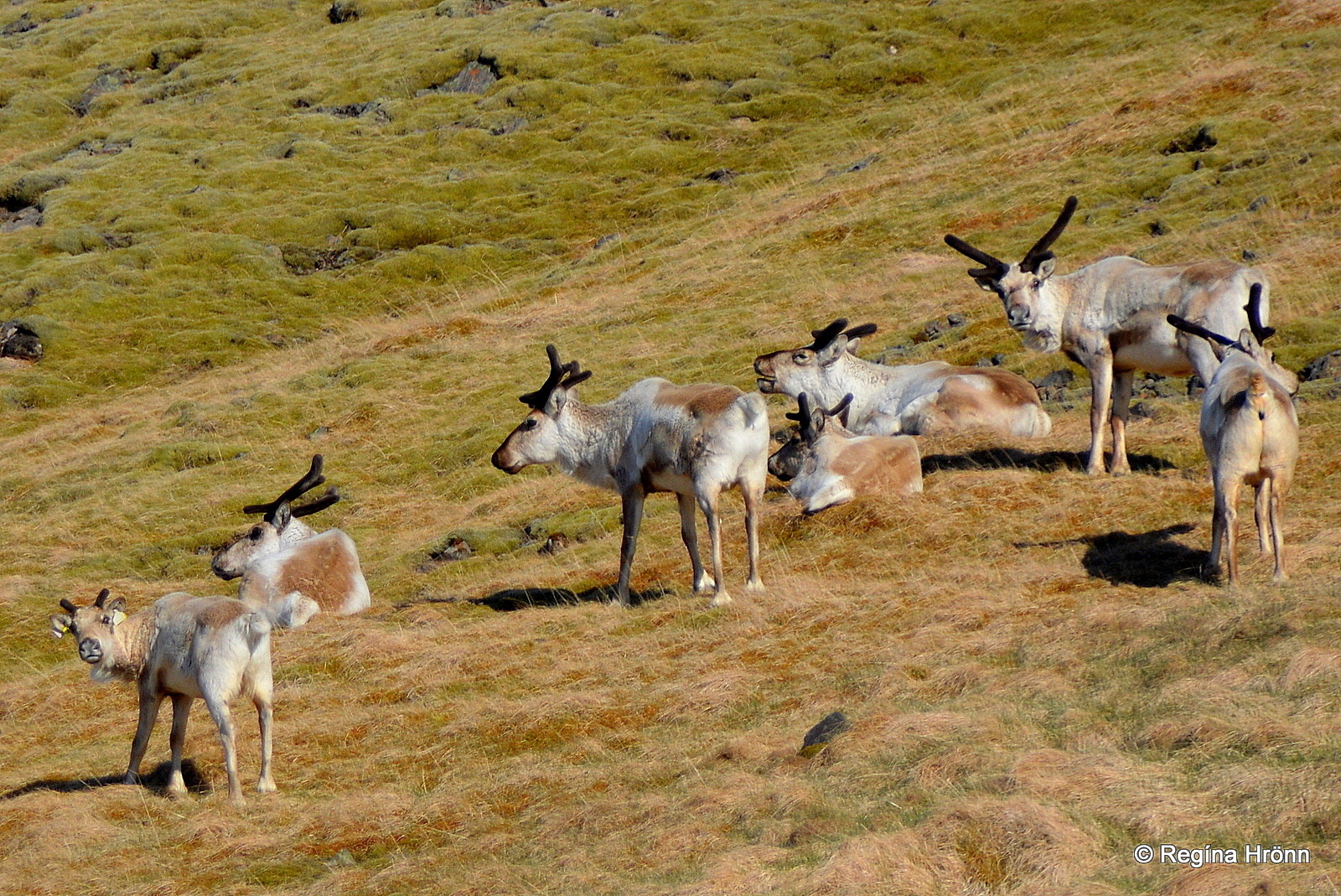

Reindeer in East Iceland
The reindeer were imported to Iceland in 1771-1787 and only survived in East Iceland and in the highland.
Egilsstaðir was an old parliament site and close to Egilsstaðakirkja church, you will find Gálgaklettur – Gallow’s rock, an old execution place.
And close to Gálgaás at Hamrar, you will find one of the 90+ view-dials in Iceland.


Eyvindará river
Eyvindará river runs by Egilsstaðir town. On hot days you can see children jump into a pool in the river by and from the old bridge.
Eyvindará is mentioned in 3 of the Sagas from this area, and Helgi Droplaugarson, one of the protagonists of Droplaugarsona Saga was buried in a burial mound by Eyvindará farm, where his aunt Gróa lived.


The newer bridge over the Eyvindará river
Helgi was the great-grandson of one of the settlers of Fljótsdalur valley, Ketill þrymur.
The Sagas which took place in this area are Droplaugarsona Saga, Fljótsdæla Saga, Vopnfirðinga Saga, Hrafnkels Saga Freysgoða and Þorsteins Saga hvíta.
I read them all when I was doing my research for this travel-blog, and they are a very interesting read.


The older bridge over Eyvindará river
I would recommend reading the Sagas before you visit Iceland, as knowing the story of the settlers and the 2nd and 3rd generations of Icelanders for sure adds color to the areas of Iceland where the Sagas took place.
Fardagafoss waterfall
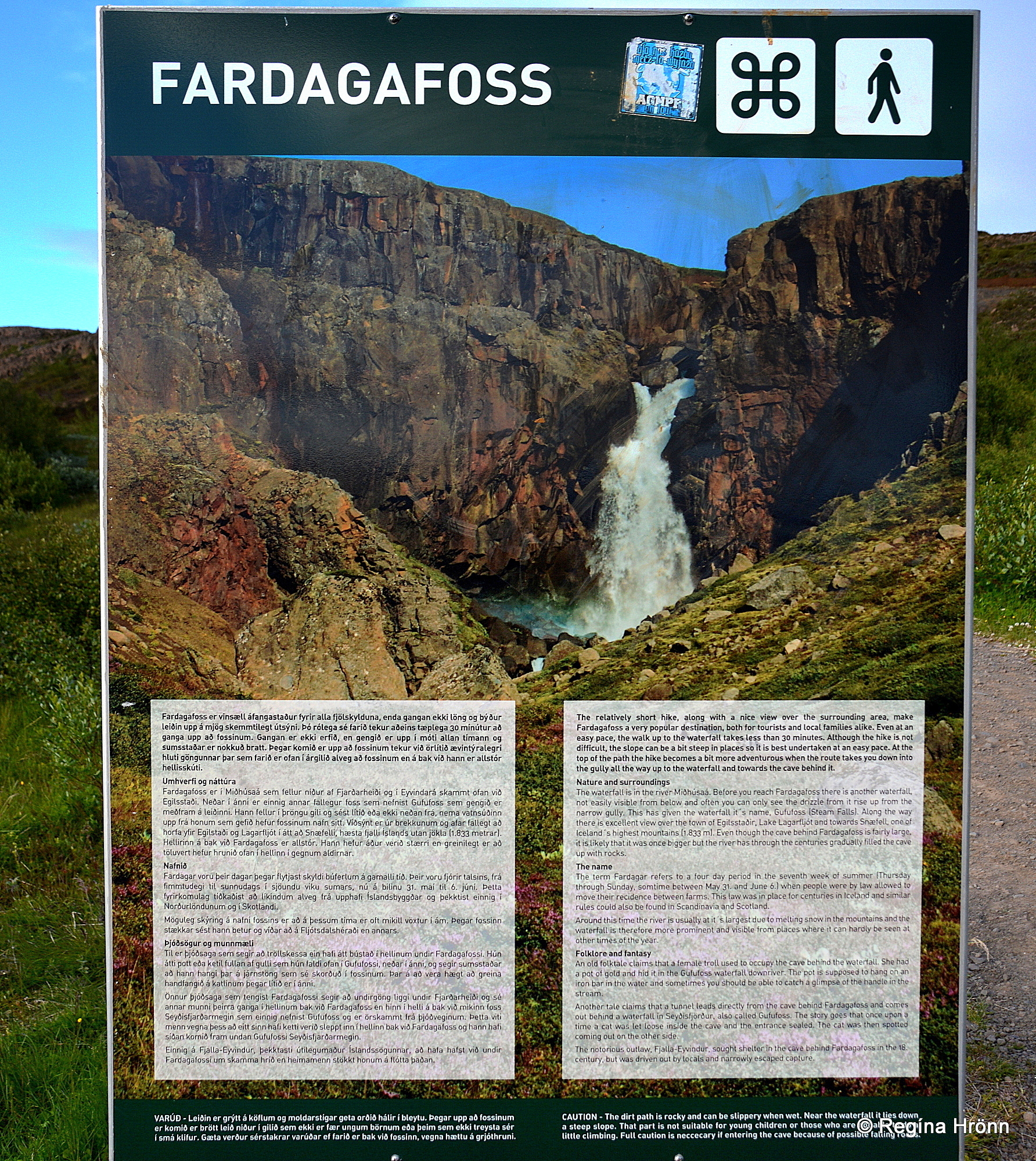

The hike to the waterfall takes only 30 minutes. It is a beautiful hike, but the last part of the hike is a rocky descent into the gorge.
On the way to Fardagafoss, you will see a waterfall by the name of Gufufoss – Steam fall.
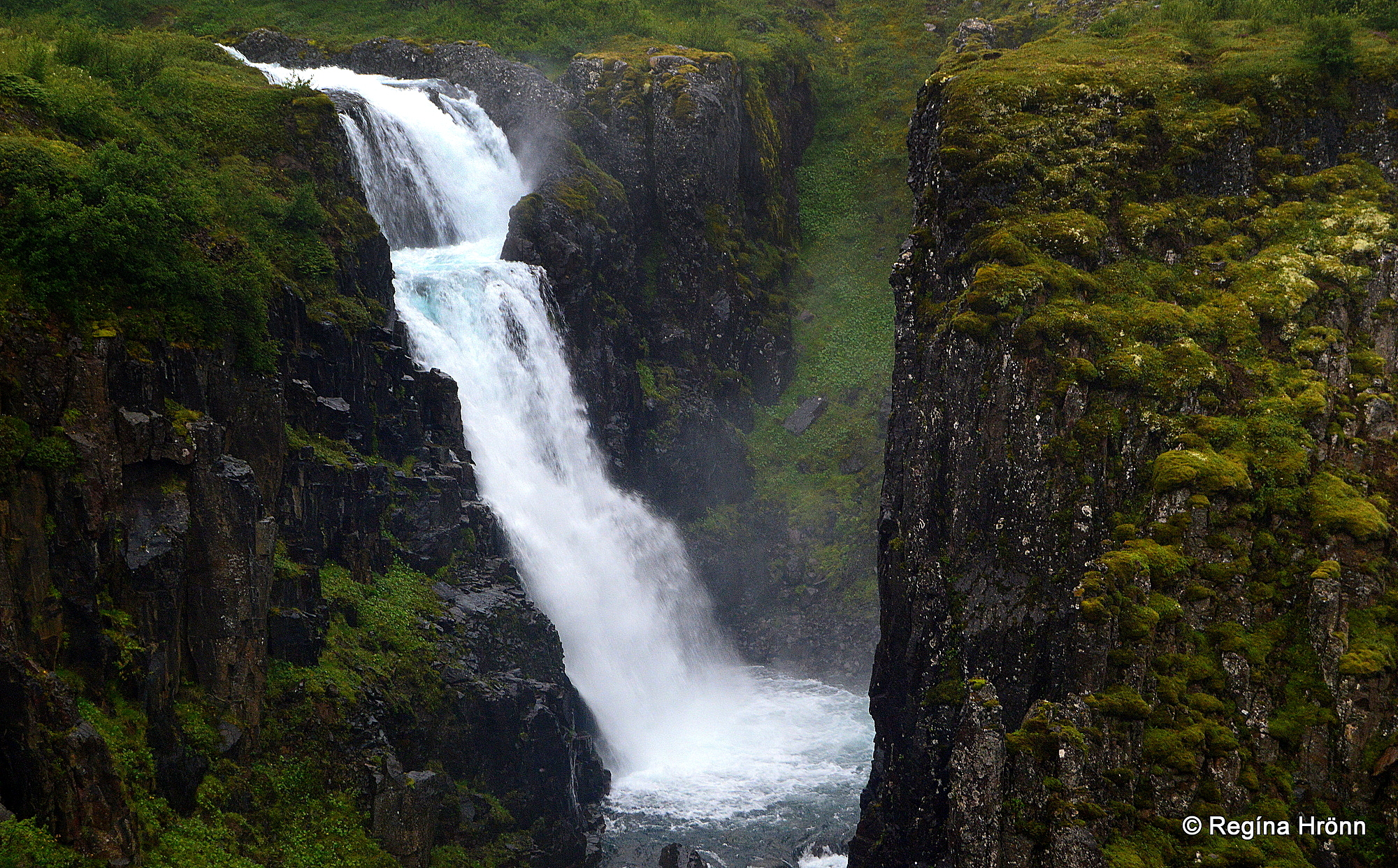

Gufufoss near Fardagafoss waterfall
I showed you another waterfall with this name above Seyðisfjörður town: the idyllic Seyðisfjörður in East-Iceland – the one with the Blue church.
The story goes that behind Fardagafoss there is a tunnel which lies beneath Fjarðarheiði heath and takes you to Gufufoss waterfall in Seyðisfjörður.
Vök baths – the floating infinity pools


Vök baths
The latest attraction in this area is the amazing Vök baths, which opened in the summer of 2019.
Vök baths are located just 5 km away from Egilsstaðir town, on the banks of Lake Urriðavatn. In the lake, you will find floating geothermal pools.
Vök baths are the only floating infinity pools in Iceland, and they are a great addition to the beautiful Fljótsdalur valley.
It is all-natural and the infinity pools were built around the geothermal water coming from the ground of the lake.
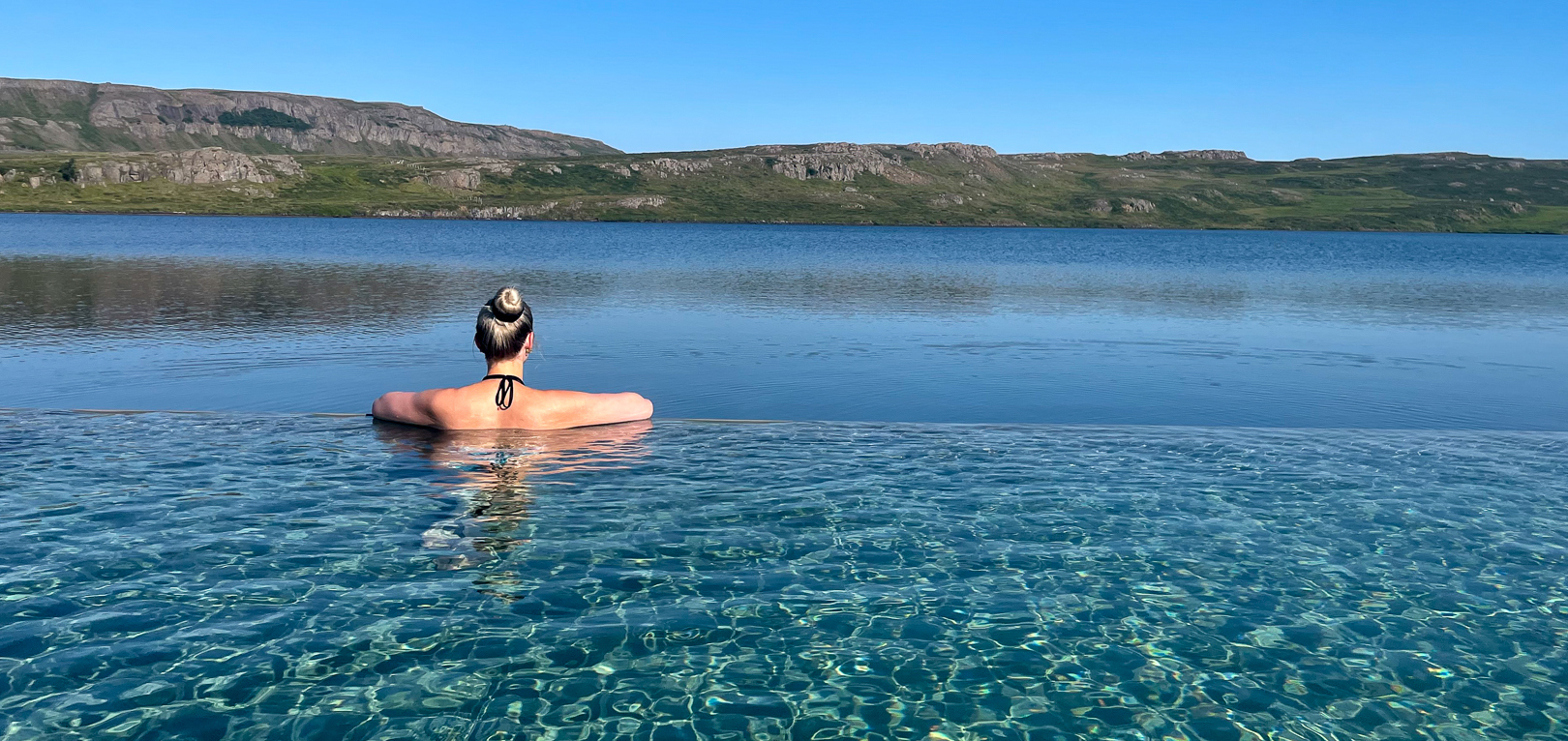

Infinity view at Vök baths
Iceland is famed for its natural geothermal pools, as I have shown you in many of my travel-blogs.
This is an age-old tradition from Viking time in Iceland, and the old Sagas often mention our ancestors bathing in hot pools. They were also used for washing clothes and cooking food.
Vök baths are a more luxurious version of this tradition. As apart from the floating pools there is a sauna, 2 hot pools onshore, a pool bar, and a restaurant.


Vök baths
These geothermal pools in the lake also stand out in East Iceland as this is a cool spot, so to speak, compared to hot spots in Iceland, where you will find geothermal water in abundance in the ground.
What sets Vök baths apart from other geothermal pools, other than having the only floating geothermal infinity pools, is that the geothermal water is actually drinkable – it is the only certified drinkable geothermal water in Iceland. That is how pure it is.


Vök baths
I love these new additions to the natural geothermal pools. They are popping up in many places, as I showed you in my Húsavík travel-blog.
Now let’s drive into Fljótsdalur valley on road 931 and visit the most interesting sights.
Lagarfljótsormurinn – Iceland’s Loch Ness
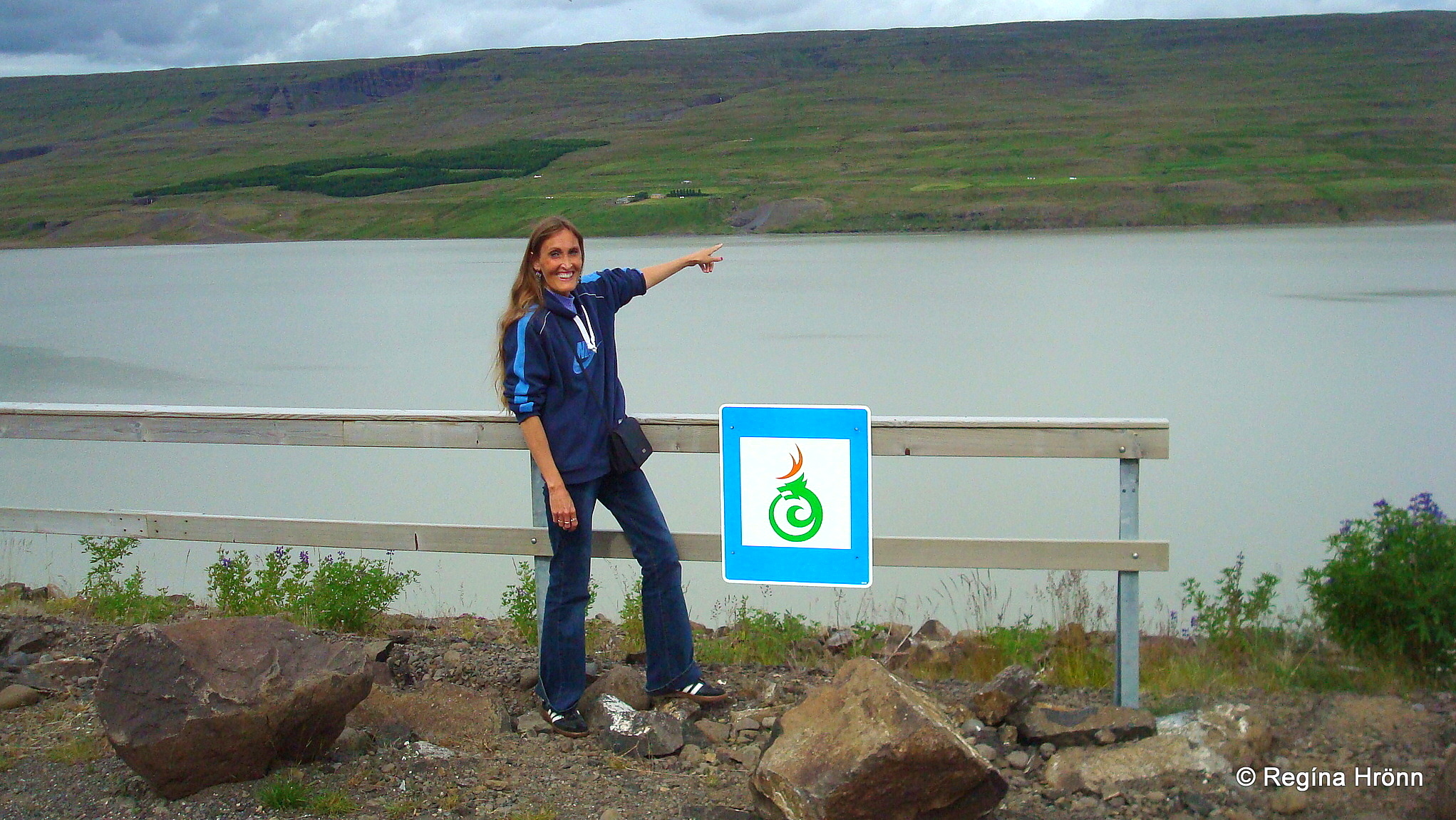

On the lookout for Lagarfljótsormurinn wyrm
We drive by Lagarfljót glacial river, the upper part of which is often called Lögurinn.
It is so broad (Iceland style) that we call it a lake, and as such it is Iceland’s longest lake, at 25-30 km. It is also Iceland’s 3rd largest lake at 53 km2, with a maximum depth of approx. 112 meters.
Fljótsdalur valley gets its name from the river – the River valley.
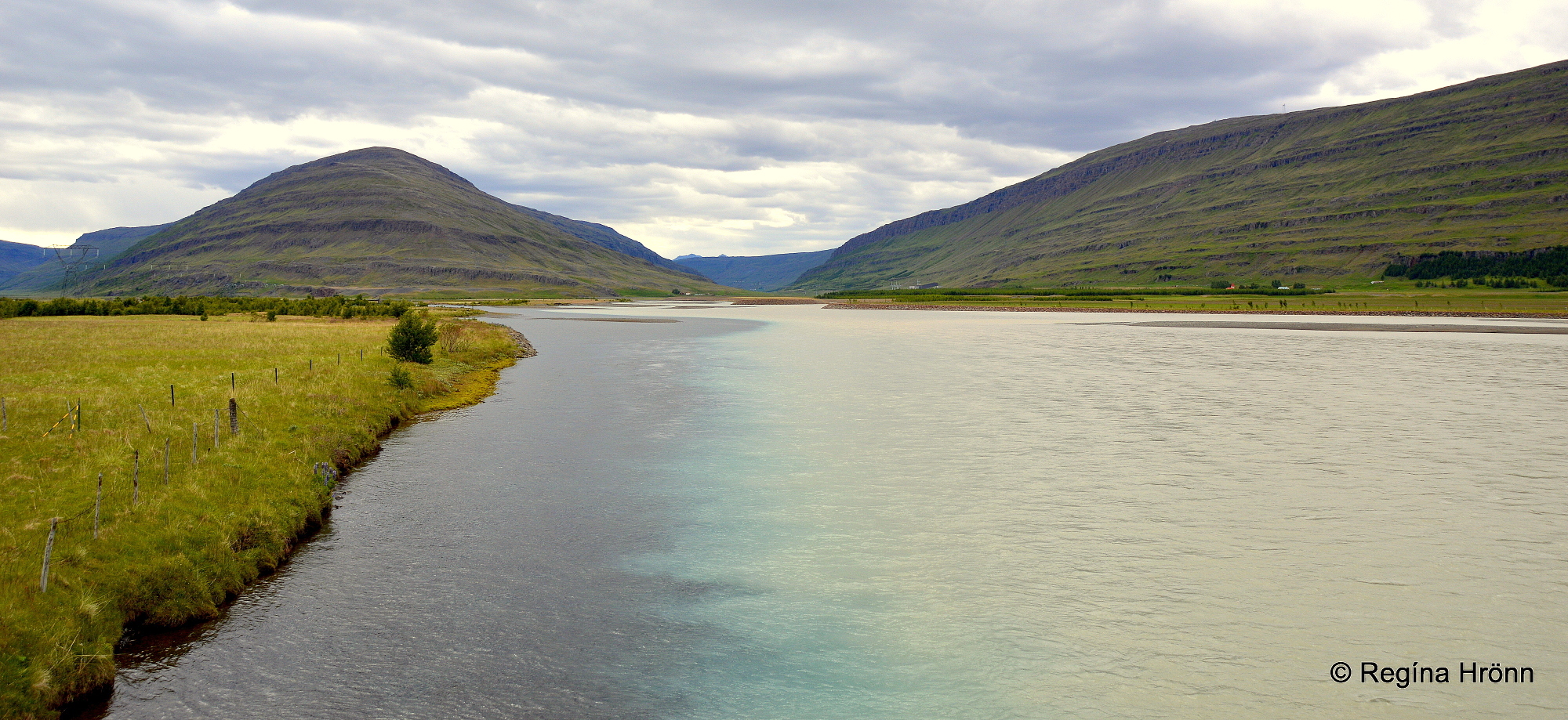

Do you see how the blue colors blend with the glacial water?
The glacial river, which above Lögurinn is called Jökulsá í Fljótsdal – Jökulsá glacial river in Fljótsdalur valley, originates in Eyjabakkajökull, which is a glacier tongue in Vatnajökull glacier, Europe’s largest ice cap by volume.
You will notice the color of the lake, it is milky white, which indicates that it has got glacial water in it.
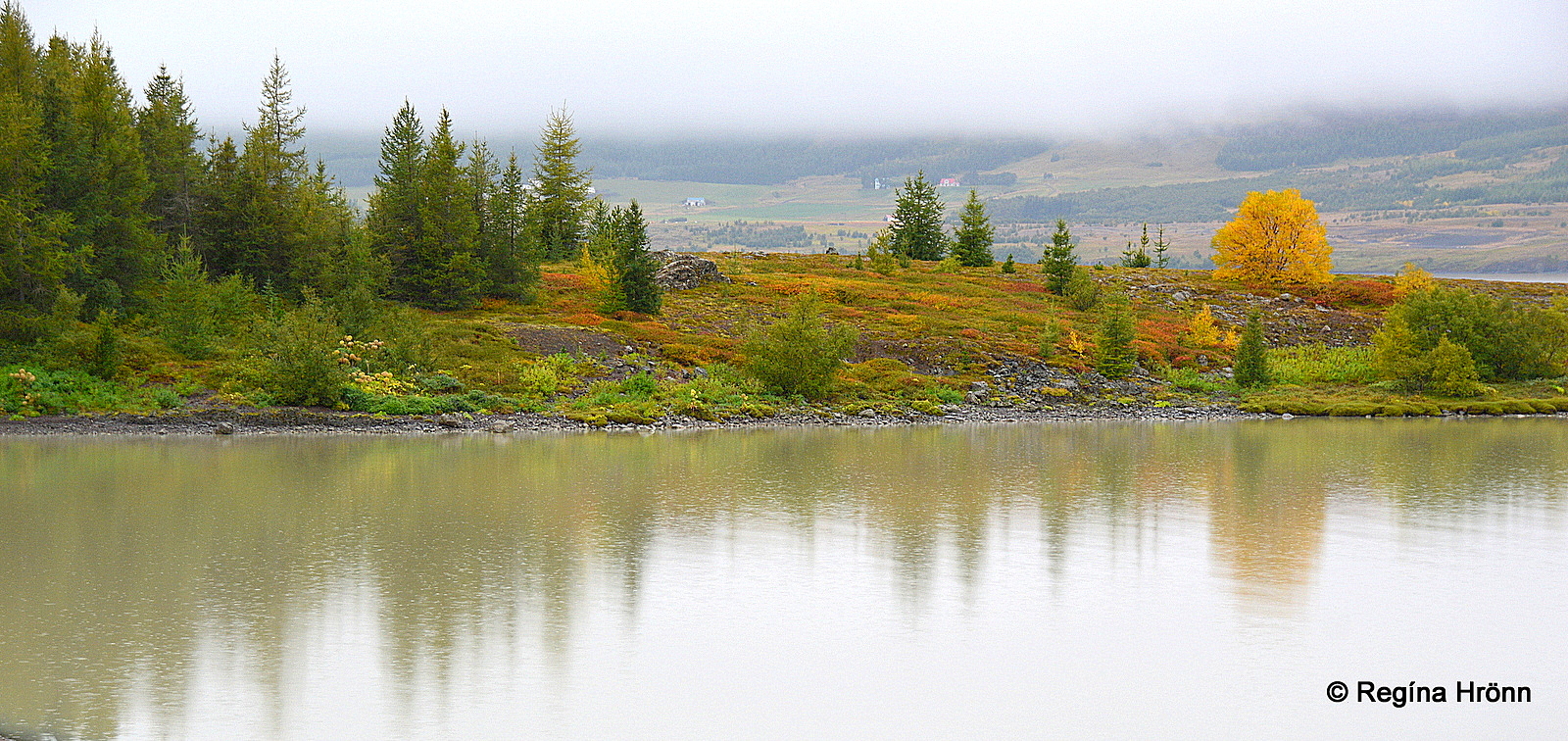

Lagarfljót
This lake, even though it looks so serene, has apparently got a monster in it! As in its depths, the Lagarfljótsormurinn wyrm is lurking.
This wyrm has been seen by several people through the centuries. And there are recent sightings as well.
The first recorded sighting of Lagarfljótsormurinn dates back to 1345, but there is no mention of it in the Icelandic Sagas which took place in this area.
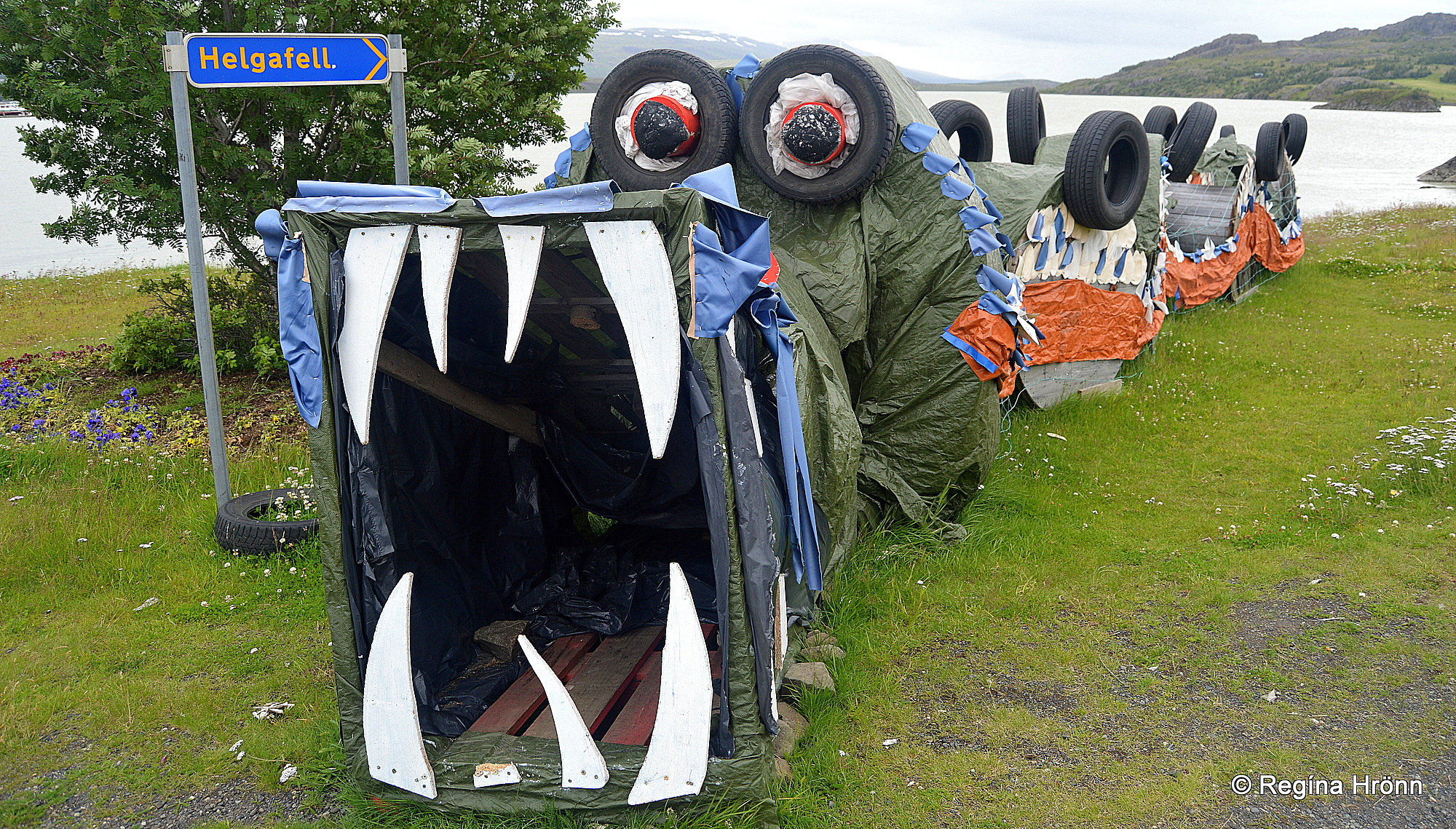

Lagarfljótsormurinn wyrm
But there is most definitely something living in the Lagarfljót river, and I have written another travel-blog about folklore which tells us about Lagarfljótsormurinn wyrm, and the more recent sightings of the wyrm, including a video: Lagarfljótsormurinn in Lagarfljót – Iceland’s Loch Ness.
So be on the lookout for Lagarfljótsormurinn when you visit this area!
Hallormsstaðaskógur forest


Hallormsstaðaskógur forest
We are now in Iceland’s leading woodland, the Hallormsstaðaskógur forest, Iceland’s first national forest, approx. 30 km south of Egilsstaðir town.
The forest covers an area of approx. 740 hectares. This is not large on an international scale, but it is large for Iceland, which hasn’t got many trees.
Landnáma – the Book of Settlements in Iceland tells us that when the settlers arrived, Iceland was forested from the mountains to the sea.
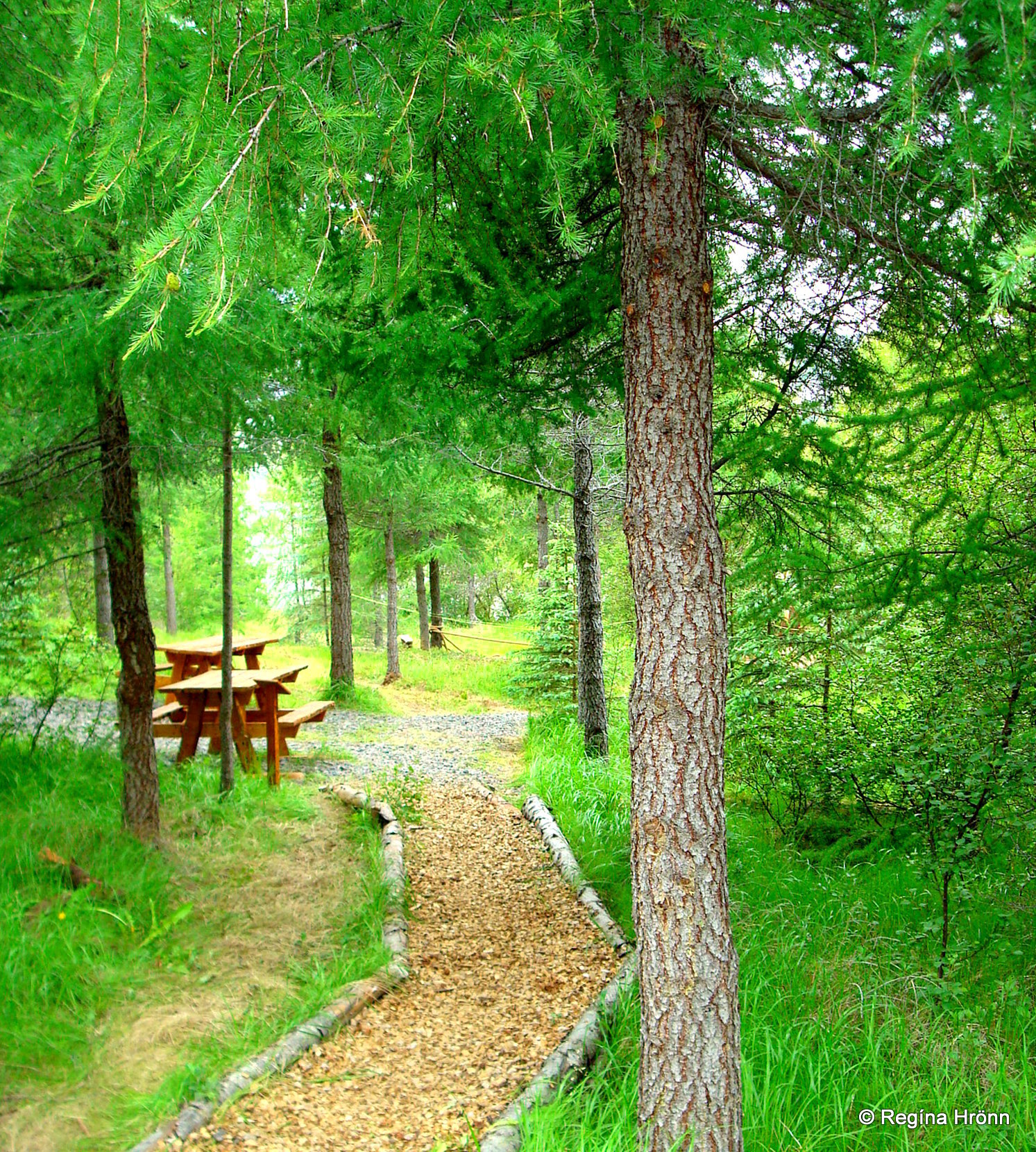

Hallormsstaðaskógur forest
The settlers and their descendants cut up a large part of the forest leaving the country barren. So reforestation is important to us Icelanders, and we have come a long way in the past decades.
The natural birch forest has been preserved since the year 1905.
In 1903, a couple of years prior to the preservation of the Hallormsstaðaskógur forest, foreign tree species were planted in the forest to see if they would grow in Iceland.


Hiking in the forest – Ljósárfoss waterfall
And now Hallormsstaðaskógur forest has an arboretum with approx. 85 foreign tree species from all over the world, so it is quite interesting to take a stroll on some of the many hiking trails in the forest.
In the forest, you will find several very popular camping areas, f.ex. at Atlavík.
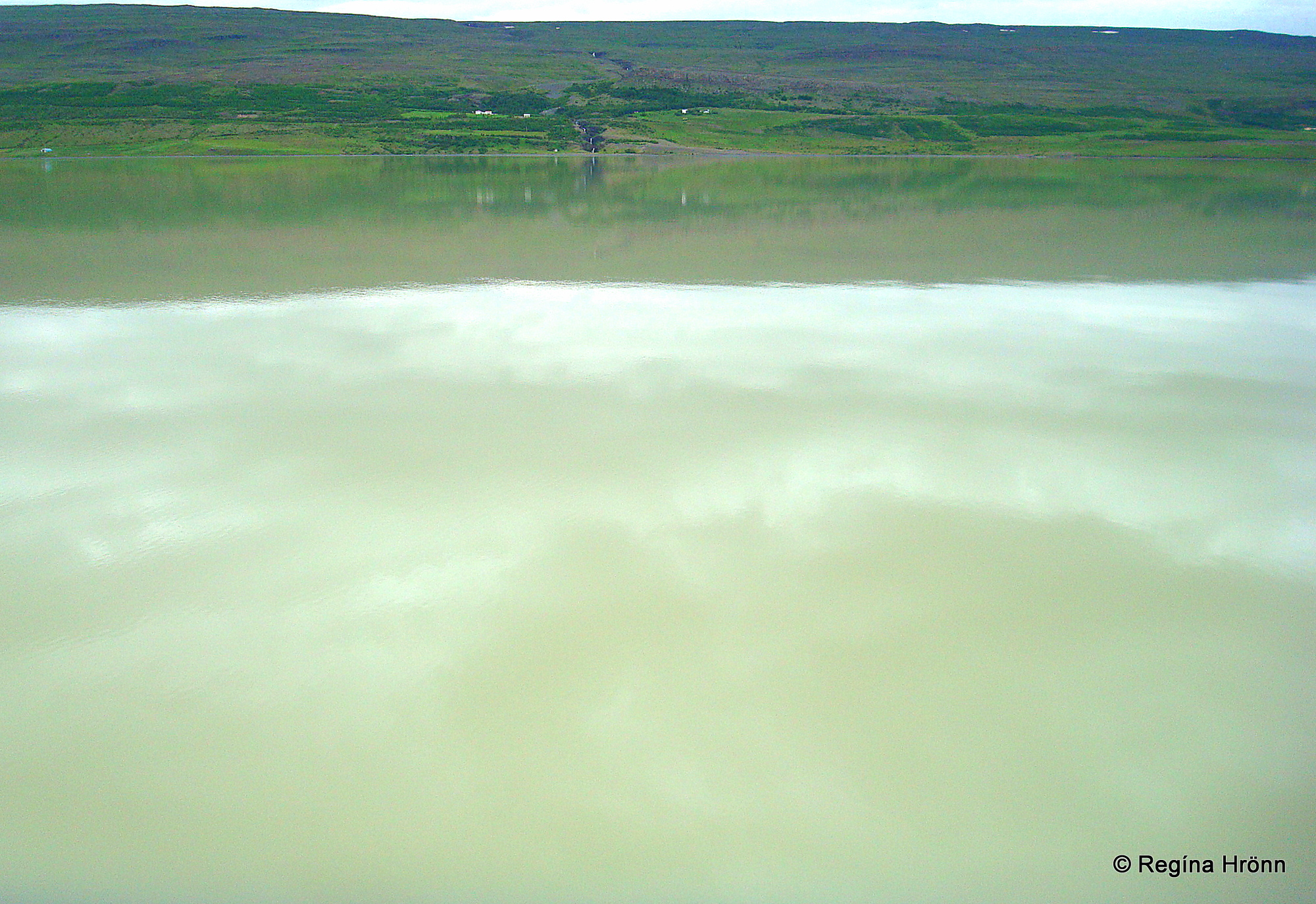

Atlavík cove
The settler Graut-Atli Þiðrandason, who is mentioned in the old Landnáma gave the name to Atlavík cove.
The Beatle Ringo Starr performed here at the popular Atlavík festival back in 1984.
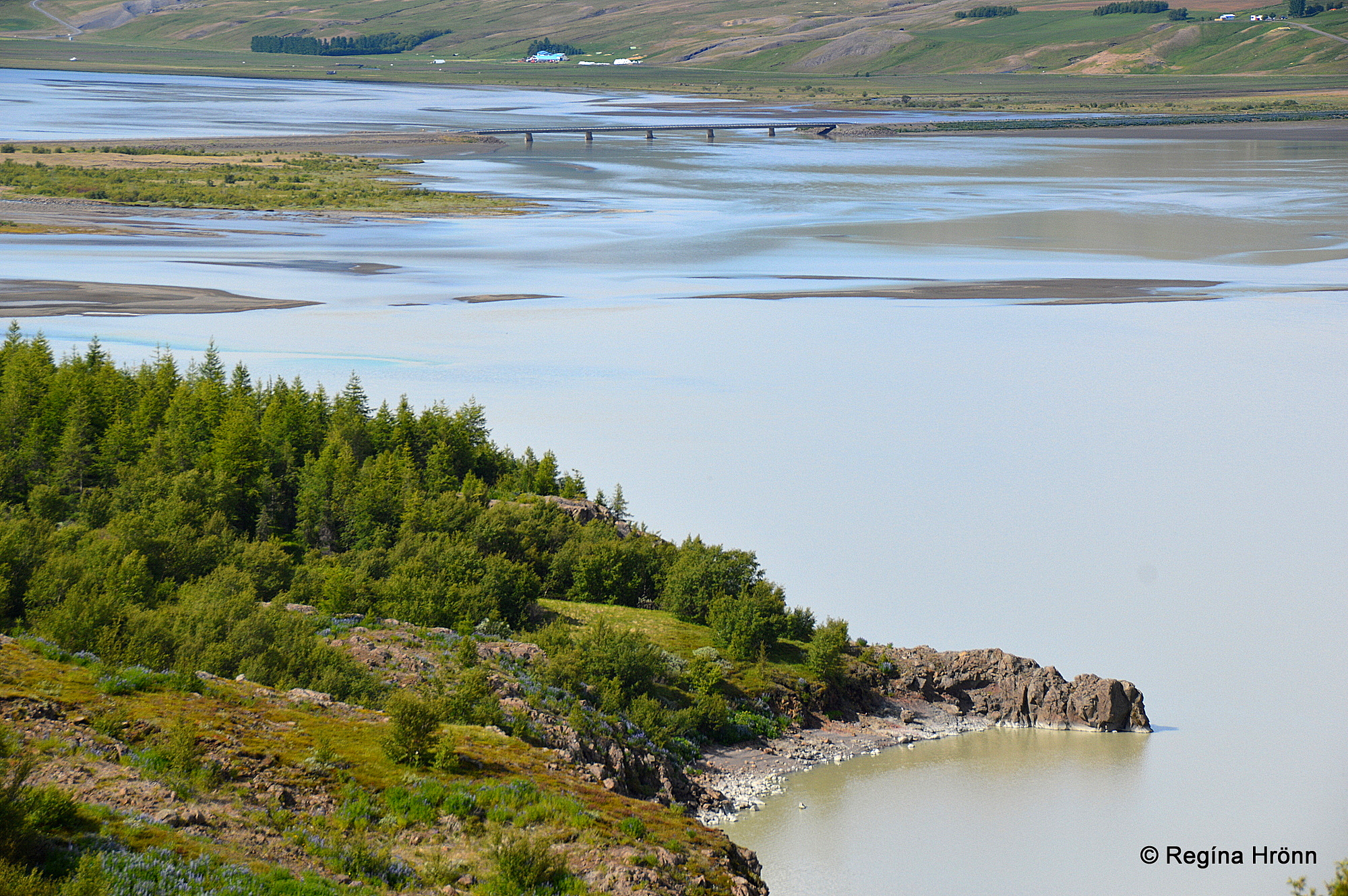

The bridge over Lagarfljót in the distance
Before we cross the bridge over the Lagafljót river there is one more interesting stop that I want to show you.
Let’s cross the small bridge over the Klifá river and park the car.
Klifá river and the rock arch
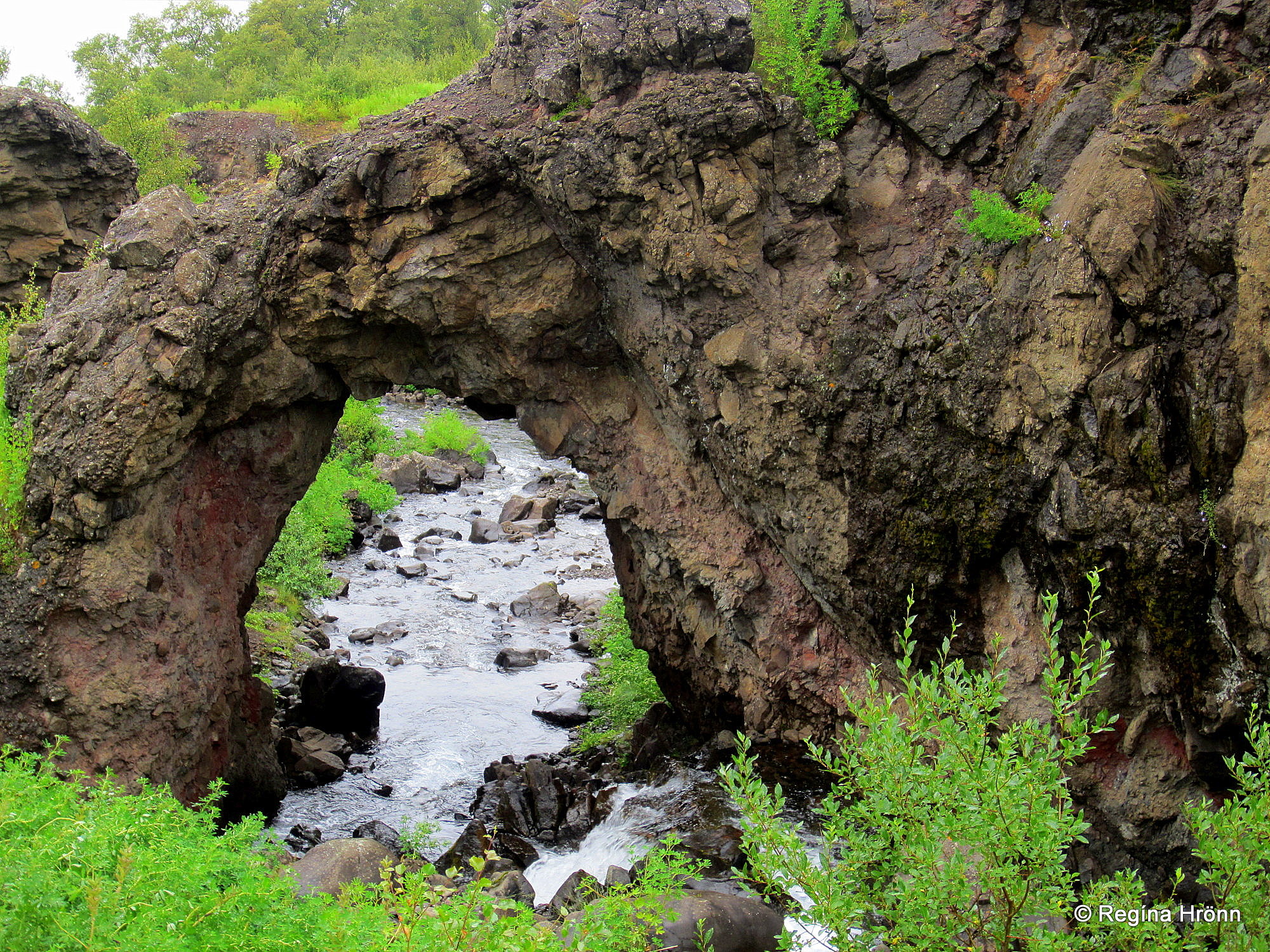

Klifá and the rock arch
Beneath the bridge, a rock arch is hidden away. Folklore tells us about a bull being killed at Hallormsstaður.
But as the farmers were inside boiling and pickling its blood, the bull stood up and ran away to Klifá.
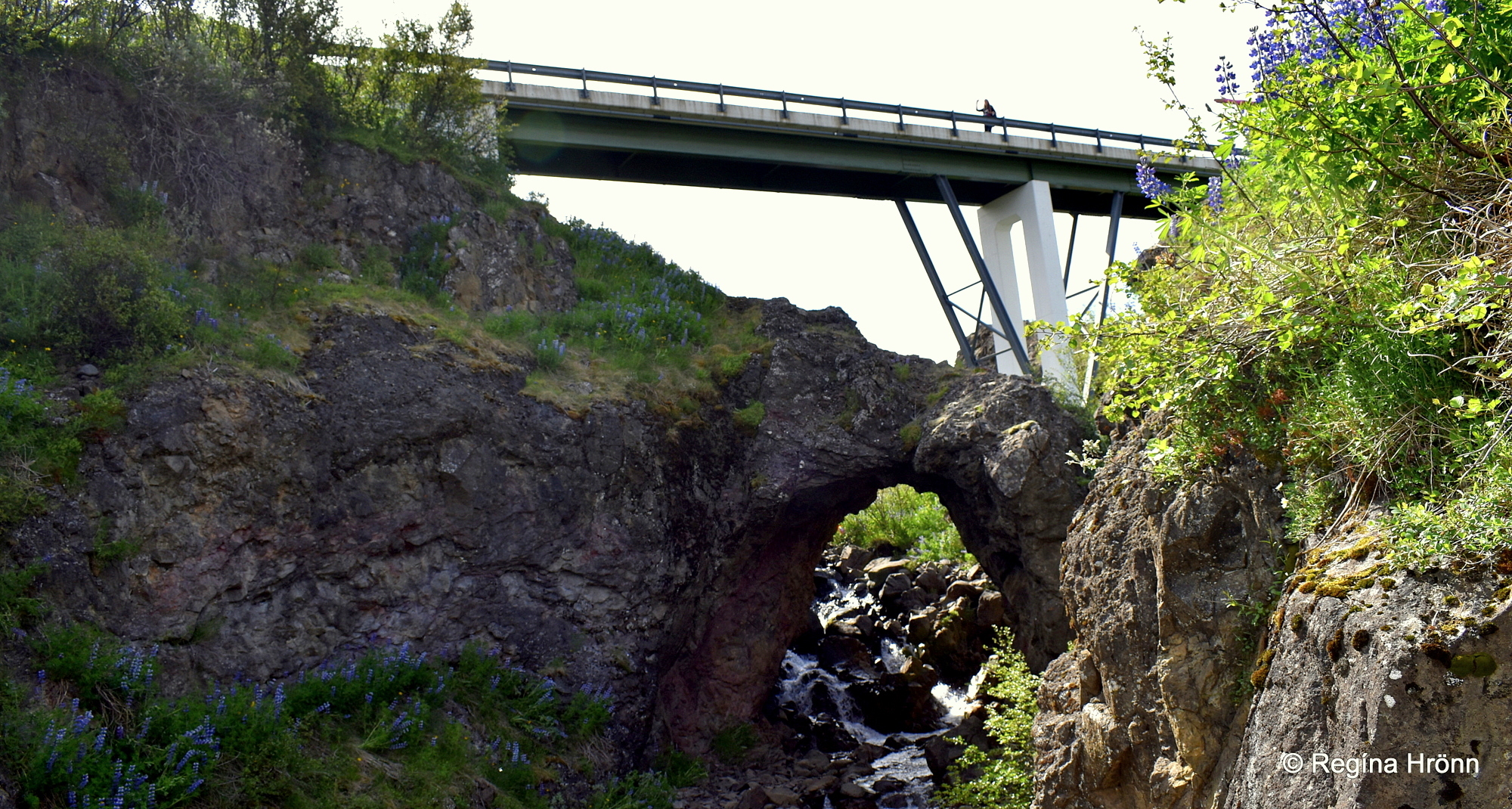

The rock arch in the Klifá river
The bull is said to live under the stone-arch even today (source: Þjóðsögur Jóns Árnasonar – the Collection of folklore by Jón Árnason).
Let’s cross Lagarfljót on the bridge and visit Hengifoss waterfall, the pearl of Fljótsdalur valley.
Hengifoss waterfall



Hengifoss waterfall
Hengifoss is Iceland’s second-highest waterfall, at 128 meters, not counting the glacier waterfalls.
An hour’s gradual uphill hike will take you to the base of the waterfall which drops into Hengifossárgljúfur gorge.
Once you reach Hengifoss waterfall you will see basalt layers from the tertiary period.
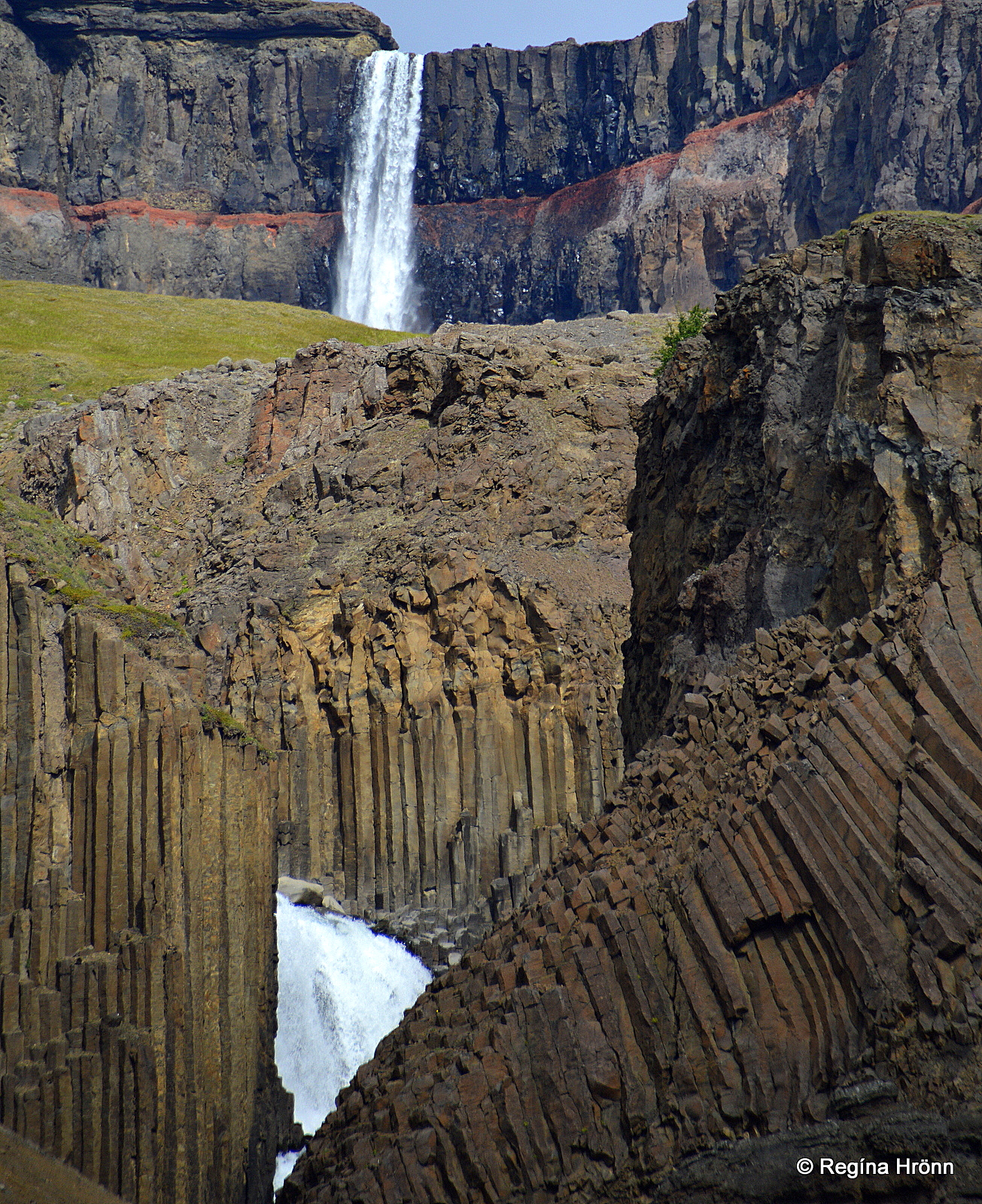

Hengifoss and the basalt columns by Litlanesfoss
The red strata patterns in the rock are characteristic of Hengifoss. The red color is the oxidation of iron in the clay.
Below the waterfall sedimentary rocks with lignite can be seen in the sandstone.
Halfway to Hengifoss, you will be able to visit another waterfall, Litlanessfoss waterfall, set in beautiful basalt columns.
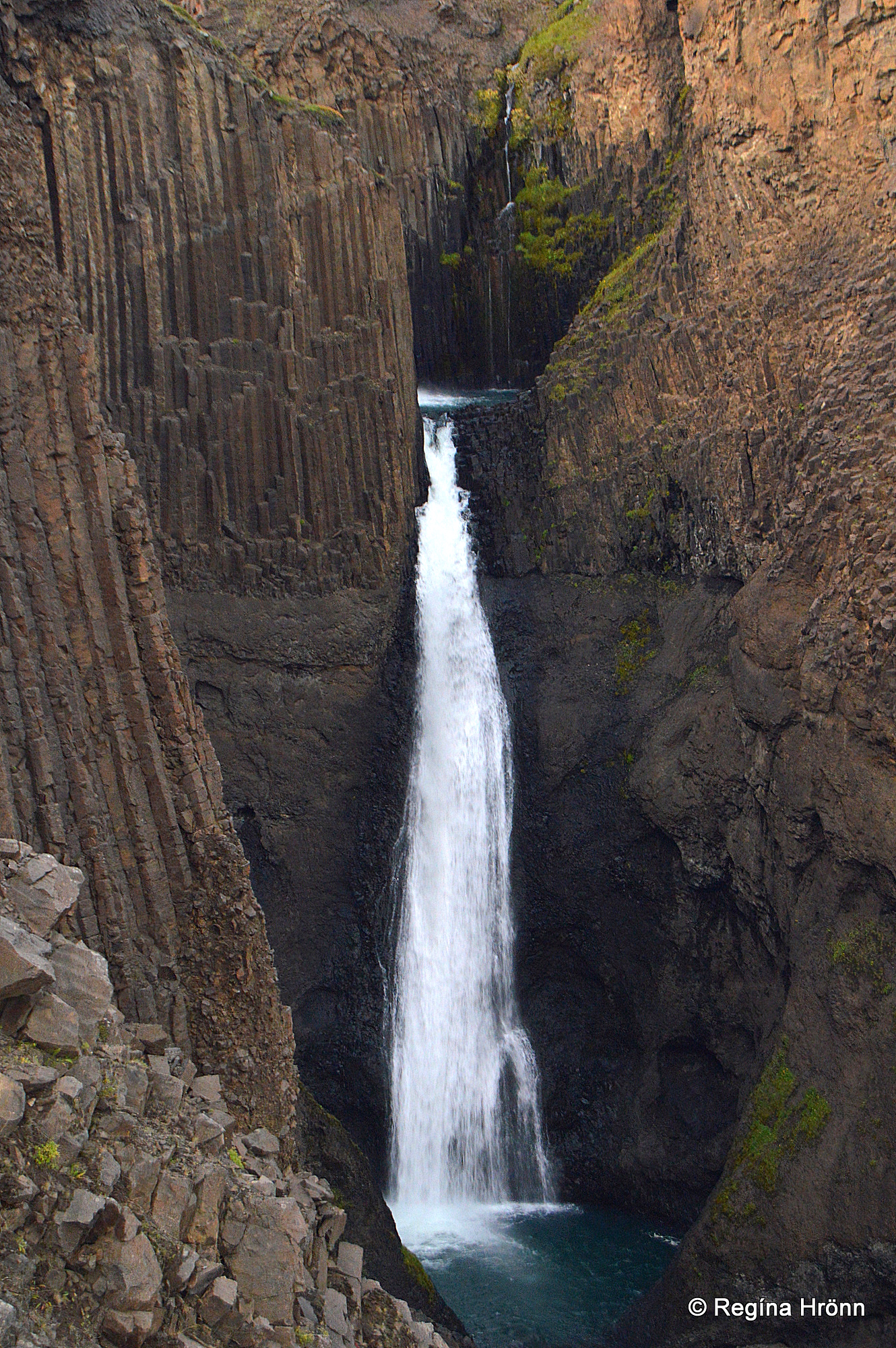

Litlanesfoss
This 30 meters tall waterfall is also called Stuðlabergsfoss waterfall, the Basalt column fall.
The basalt column pillars by Litlanesfoss are amongst the tallest basalt columns in Iceland.
It is also possible to hike to Litlanesfoss on the other side of the river and go into the canyon where you will see these extraordinary basalt columns up close.
If you are interested in seeing more from this hike and reading the folklore about the elves in the gorge, then I have written another travel-blog about my visits to these waterfalls: The Majestic Hengifoss and Litlanesfoss waterfalls in East Iceland.
Now, let’s pass the road leading to Kárahnjúkavirkjun and visit the Snæfellsstofa Visitor Center.
Snæfellsstofa Visitor Center


Snæfellsstofa Visitor center
Snæfellsstofa serves as a Visitor center and Information center for the east territory of the National Park of Vatnajökull glacier.
The Visitor center gets its name from Mt. Snæfell (1,833 m). The central volcano Snæfell is Iceland’s highest mountain, which is not enclosed by one of our glaciers.
Snæfellsstofa was opened in 2010 and hosts an exhibition on the circulation and formation of nature and the wildlife in this area.
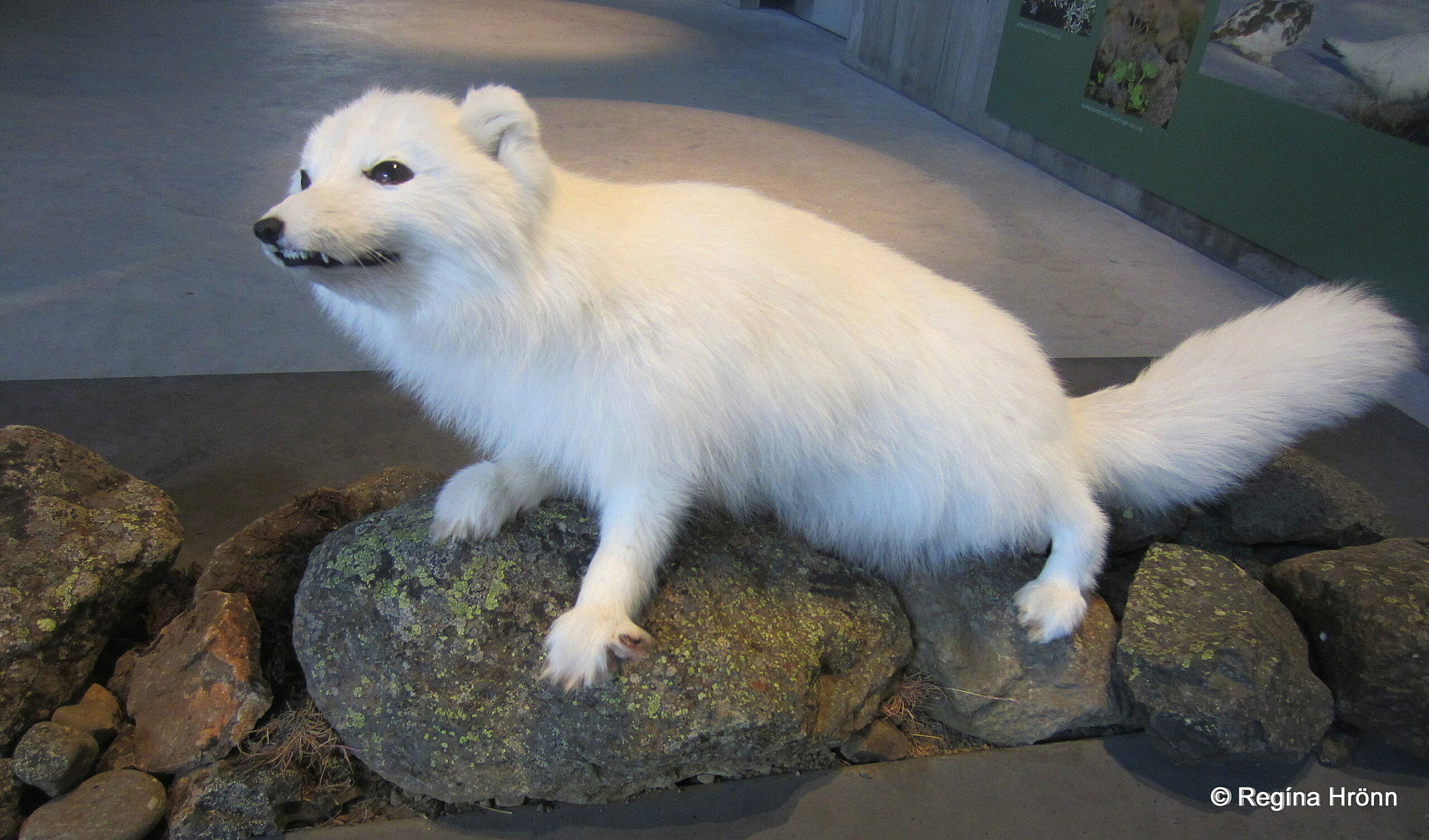

An Arctic fox at Snæfellsstofa
Our next stop is only a stone-throw away from Snæfellsstofa. It is one of the most beautiful houses in Iceland and the archaeological site of a monastery.
Skriðuklaustur
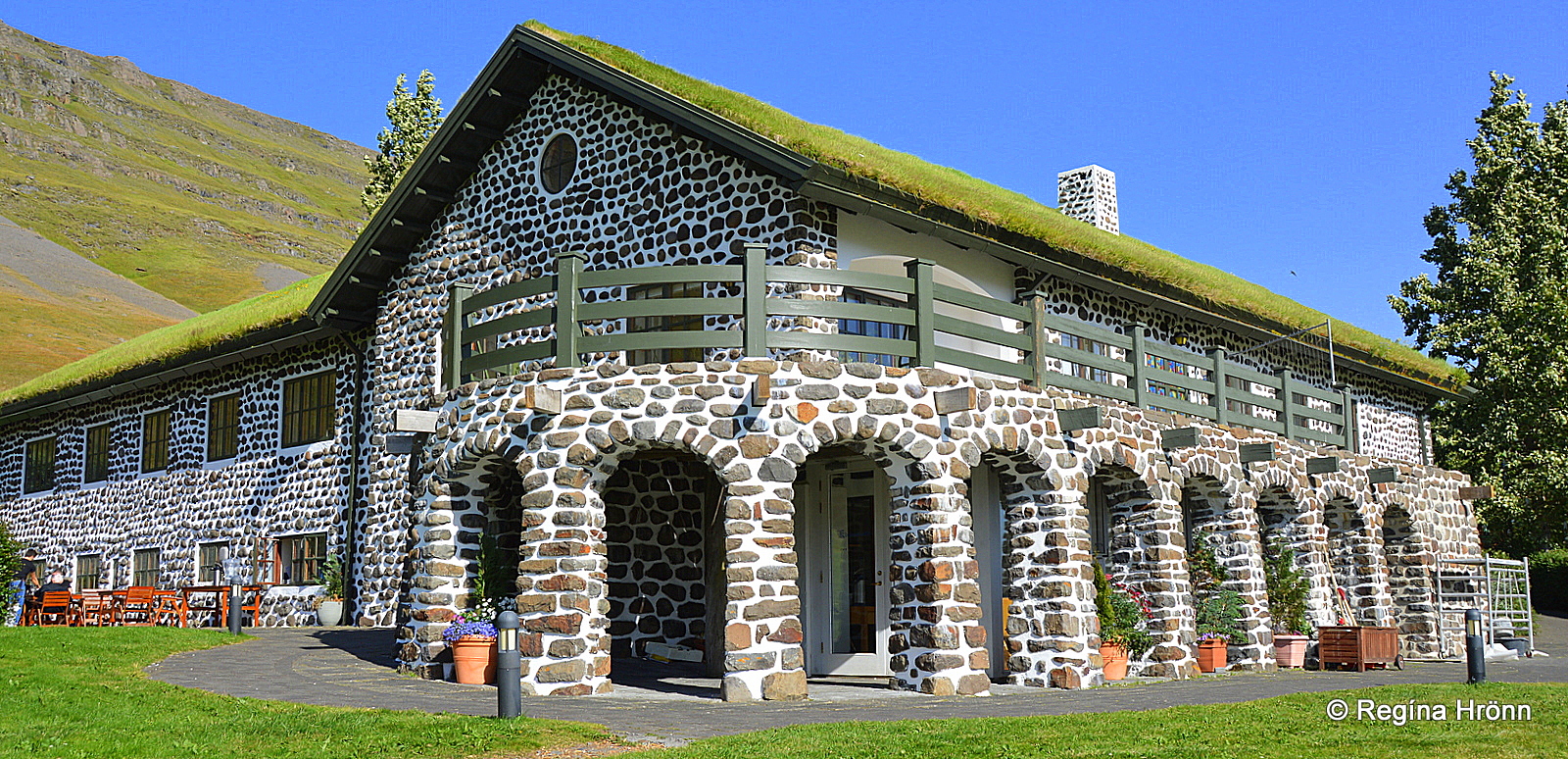

Skriðuklaustur – Gunnarsstofnun
At Skriðuklaustur you will find a one-of-a-kind building in Iceland, the former home of the author Gunnar Gunnarsson (1889-1975), built in 1939.
This beautiful house was designed by the German architect, Fritz Höger.
When Gunnar moved to Reykjavík 9 years later he donated his beautiful home to the Icelandic nation.
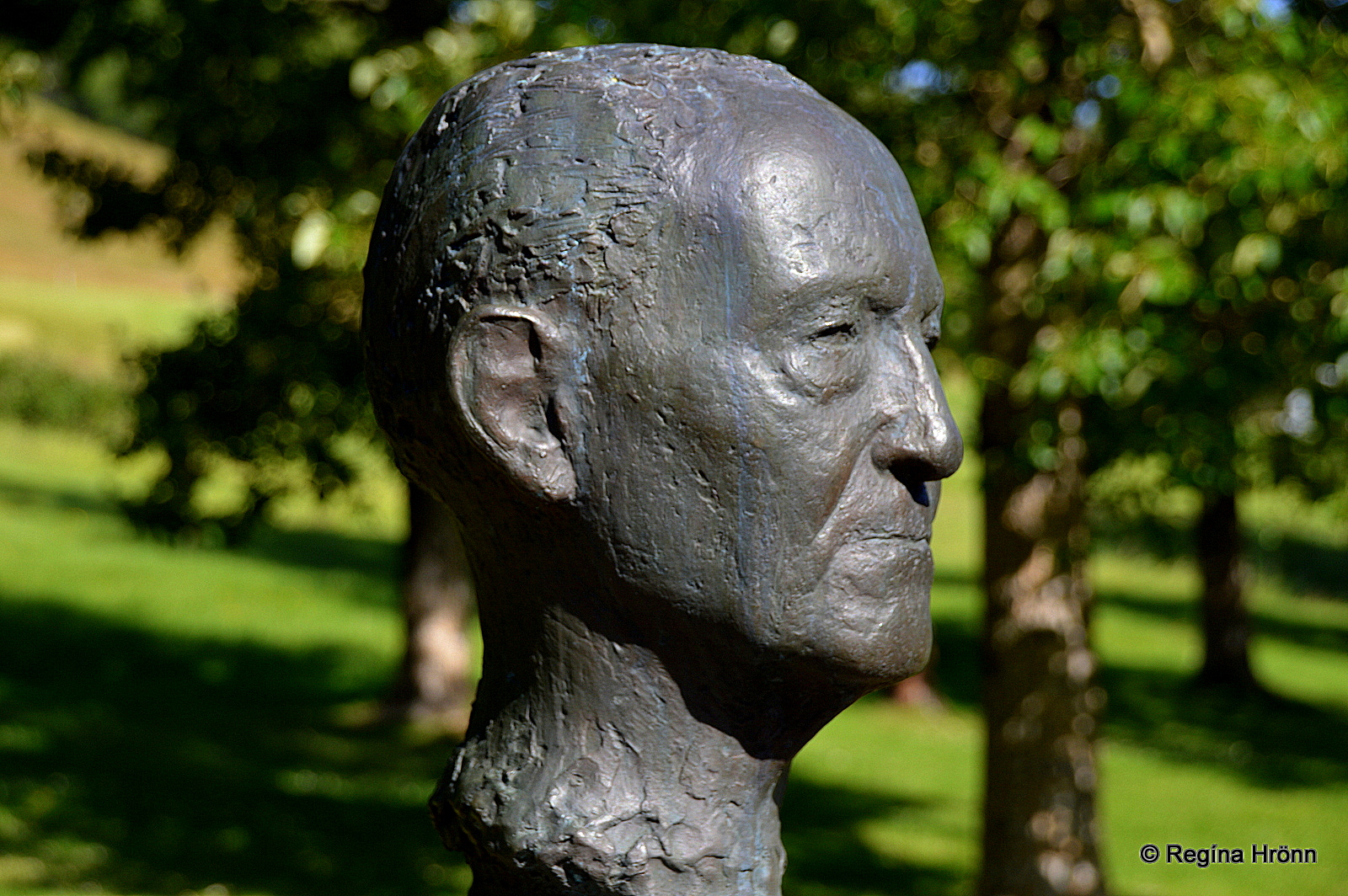

Gunnar Gunnarsson
The house was to be the residence for authors and artists and used for experimentation in farming.
For more than 40 years an agricultural research station was operated at Skriðuklaustur.
It now serves as a cultural and research center, Gunnarsstofnun – the Gunnar Gunnarsson foundation. On the ground floor is a restaurant, Klausturkaffi.
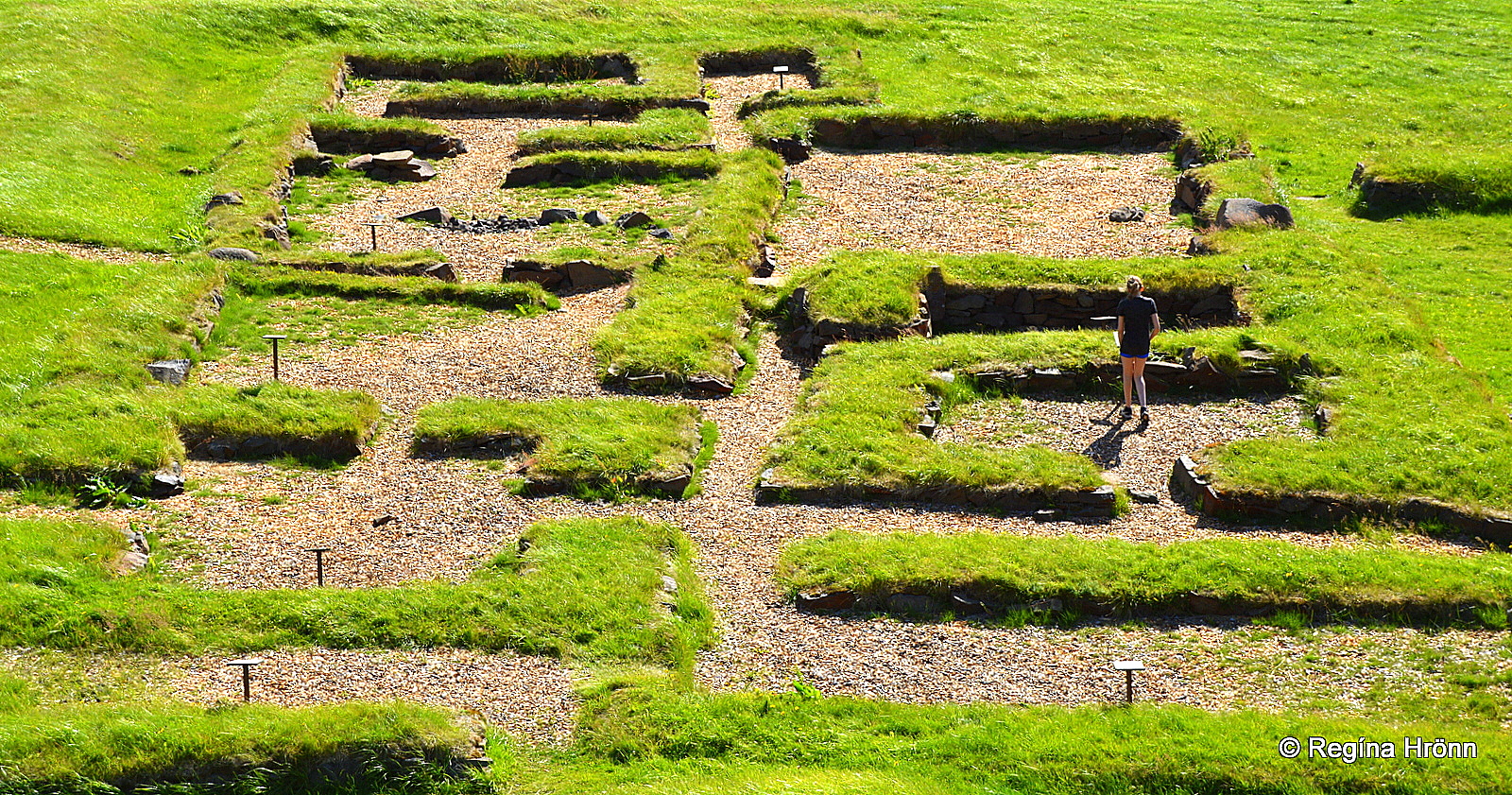

The archaeological site at Skriðuklaustur
From 1493-1552 an Augustinian monastery, the last Catholic monastery in Iceland operated at Skriðuklaustur.
The main purpose of the monastery was attending to the sick.
Beneath the beautiful house of Gunnar, you will find the archaeological site of the monastery and will be able to visit the ruins of the monastic site.
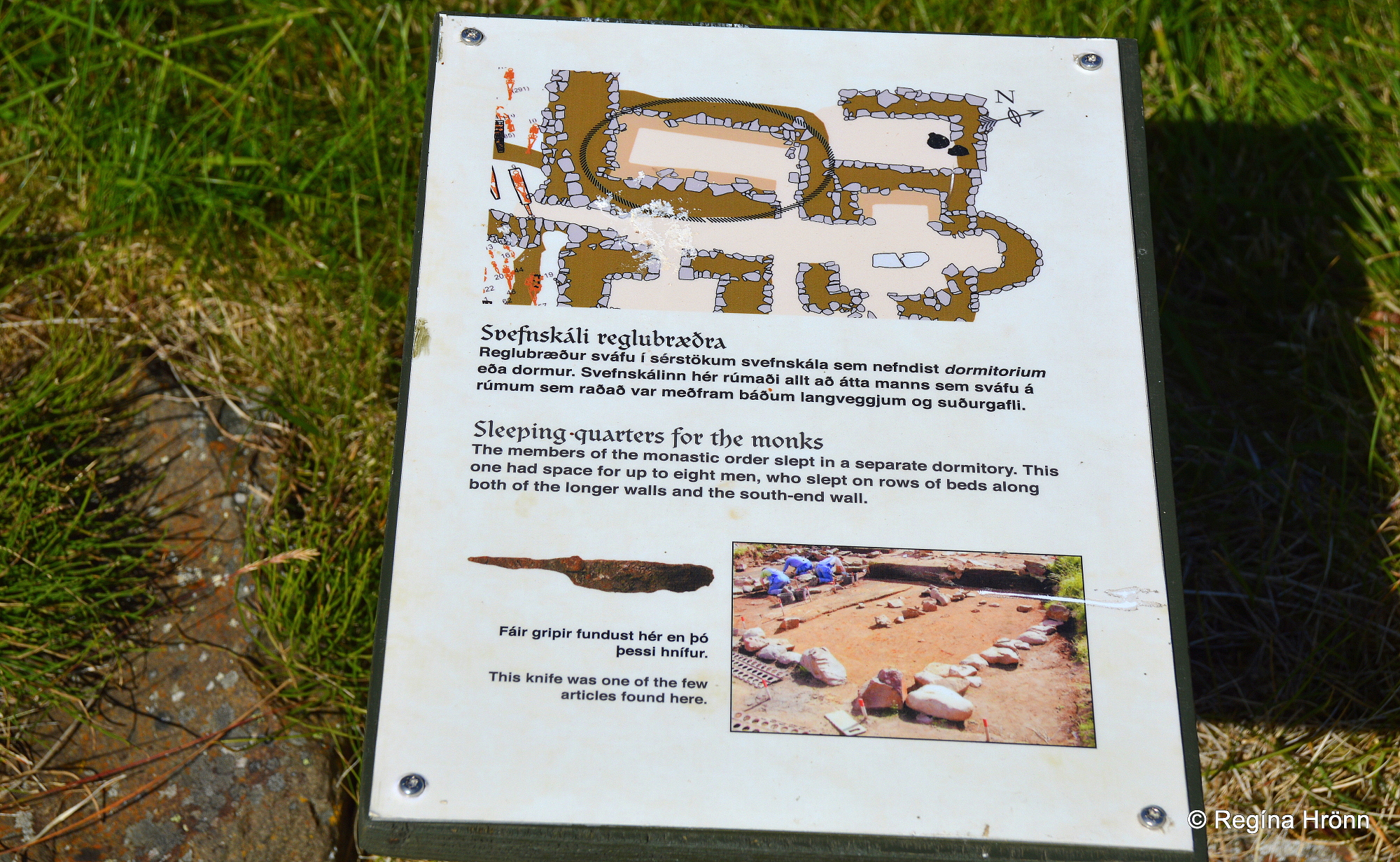

At the information center at Skriðuklaustur, you can visit an exhibition about this only cloister in Iceland which has been completely excavated.
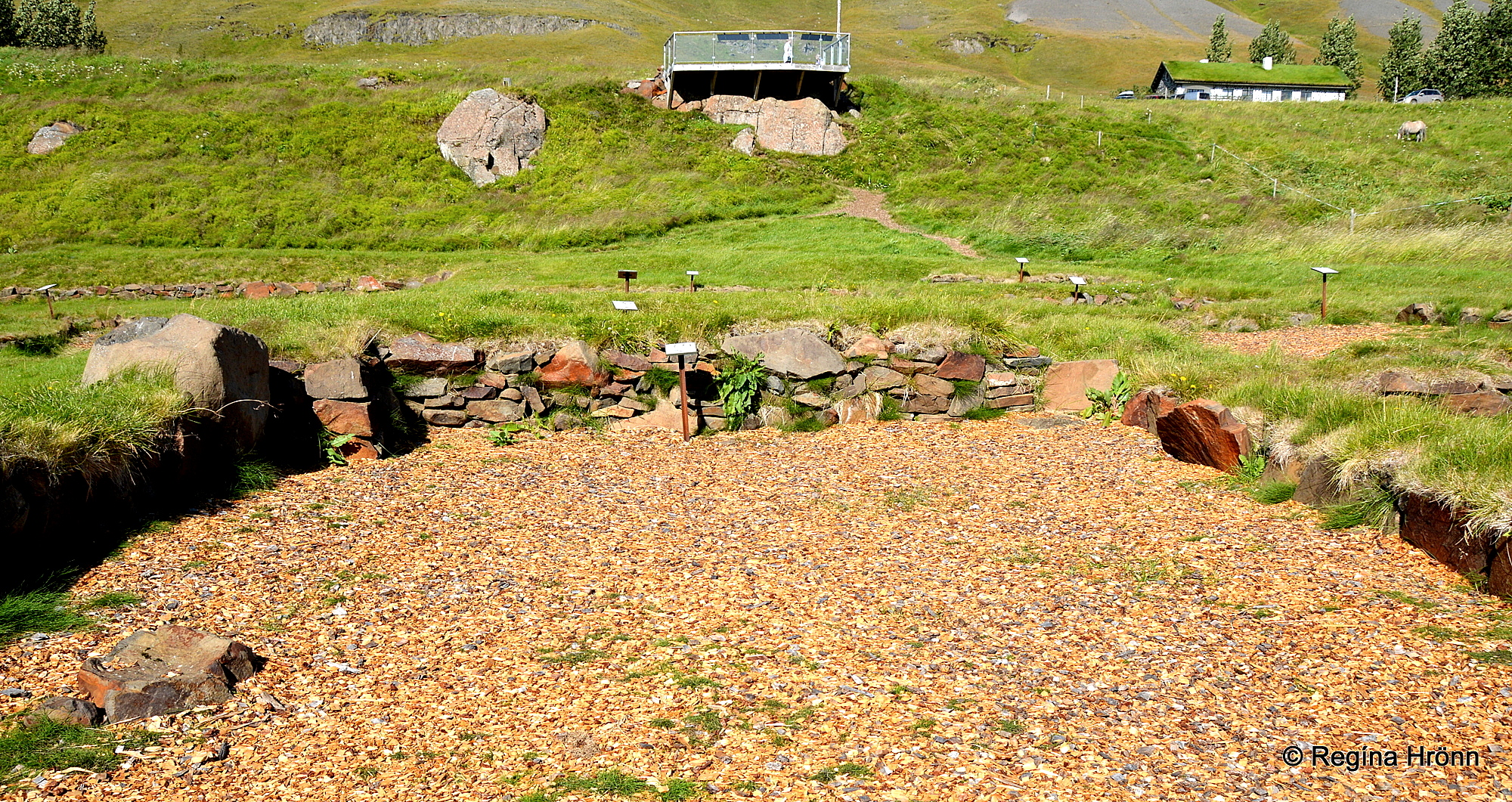

The monastic ruins
I have written another travel-blog about Skriðuklaustur with much more detailed information including which artifacts have been found during the excavations: Skriðuklaustur and the archaeological excavations in East Iceland.
Our next stop is 3 km away.
Valþjófsstaðakirkja and the old church door


Valþjófsstaðakirkja church
At Valþjófsstaðir you will find a lovely church consecrated in 1966.
This church site is best known for an old carved wooden pine church door in an older stave church, dating back to around the year 1200.
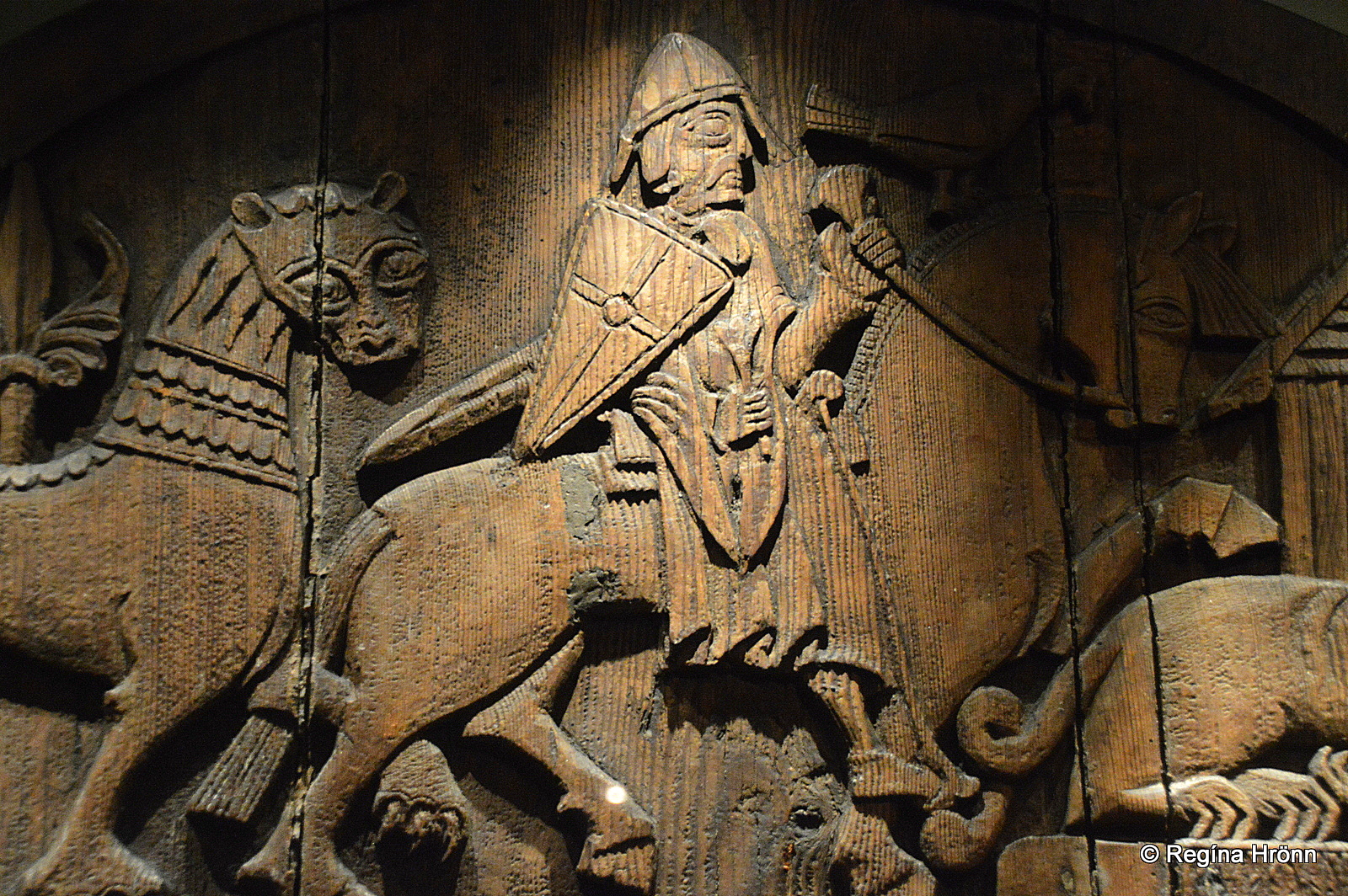

The original door
This old wooden door is called Valþjófsstaðahurðin – the Door of Valþjófsstaðir. It is considered to be the most precious of Iceland’s antiquities, apart from the old Sagas.
Valþjófsstaðahurðin is the only old carved door that has been preserved.
The carvings on the door are inside 2 roundels. They are in Romanesque style and tell us a story about a knight and a lion.
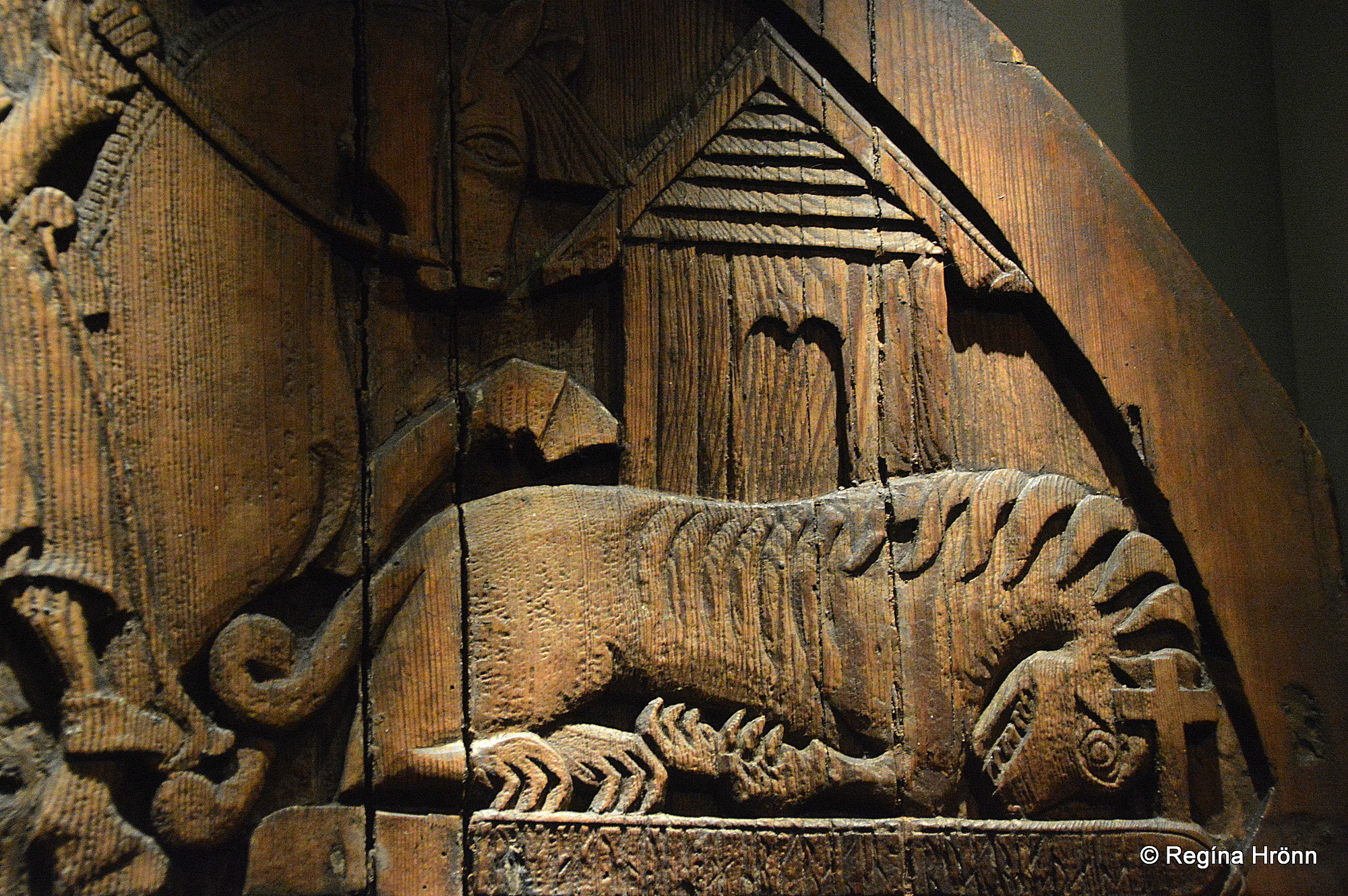

The original door
There is a dragon there as well, which the knight slays. The lower roundel depicts 4 dragons.
The church door was originally in the old stave church here at Valþjófsstaður and in other churches erected at this site until 1852.
A replica of the old church door has been made, which adorns the inner entrance to the church. It was a present to the church when the new church was consecrated.
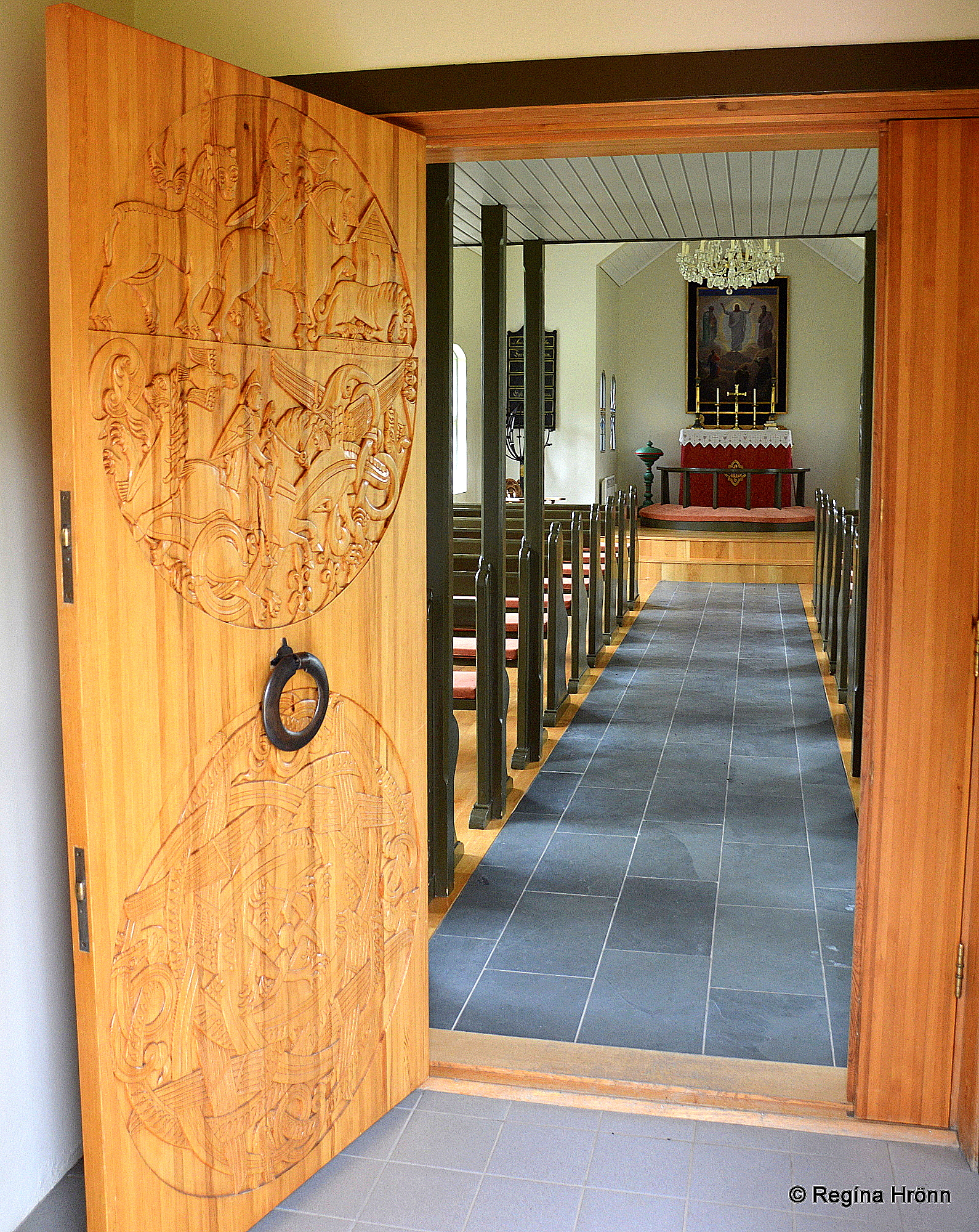

The replica of the old Valþjófsstaðahurð door
Valþjófsstaðahurðin door is now one of the most precious artifacts in the National Museum of Iceland, and I would recommend a visit to the museum to see the original door.
Our next stop is only 2 km away.
The Fljótsdalsstöð power station
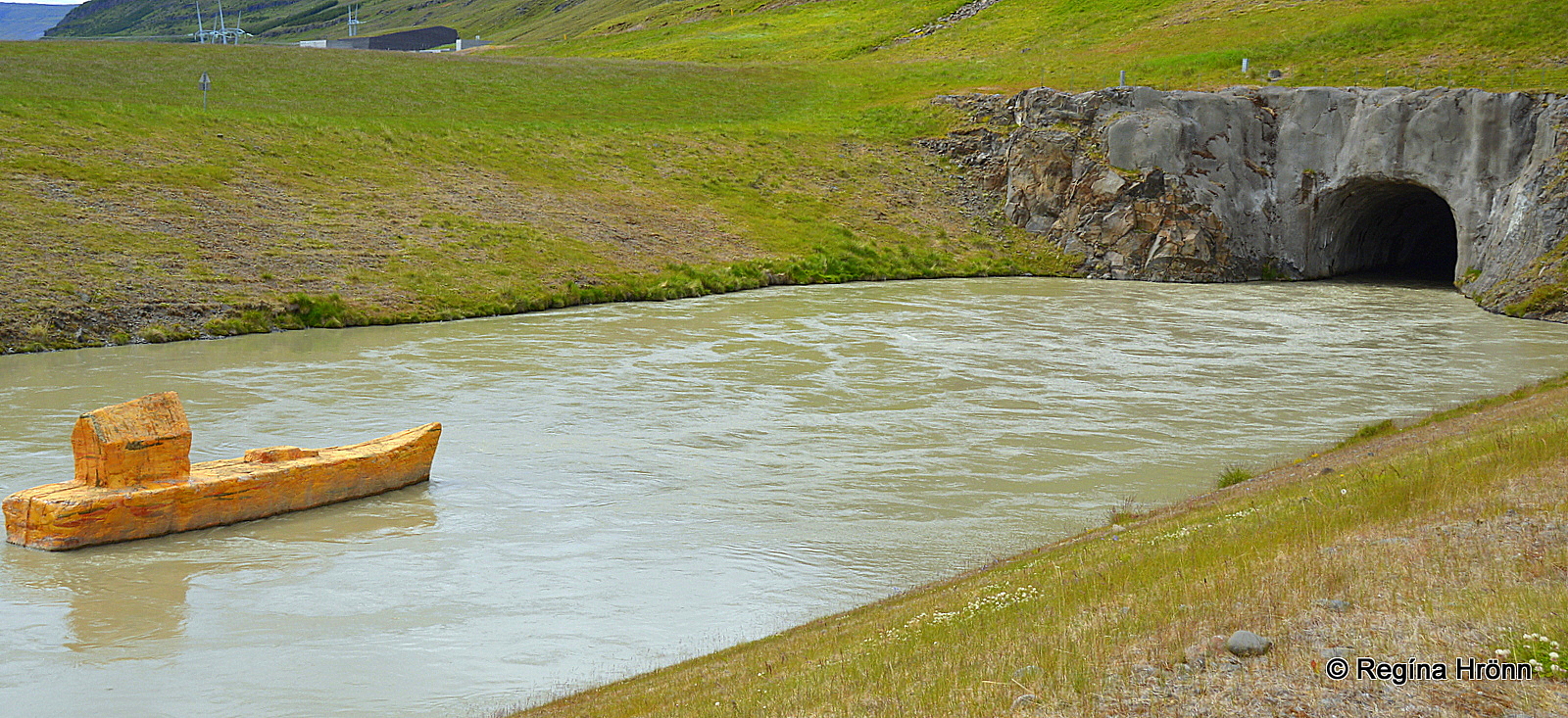

The outlet flow and Eilífi draumurinn
If we drive further into the valley we pass Fljótsdalsstöð, which is the subterranean power station of Kárahnjúkavirkjun hydropower plant.
This largest power plant in Iceland is located approx. 0.8 km inside the mountain and the powerhouse is in a 115 meters long underground cavern.
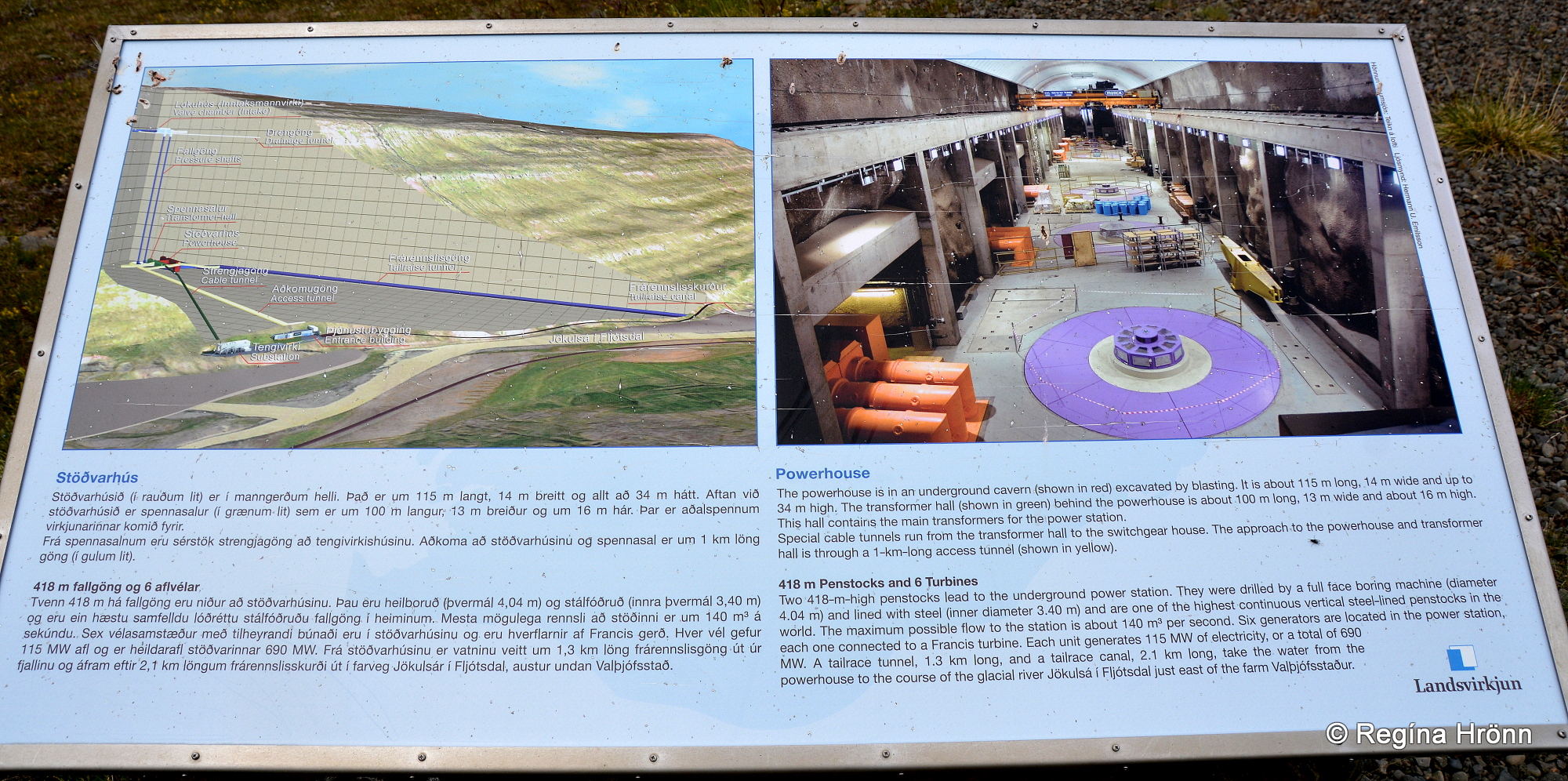

Jökulsá in Fljótsdalur is also harnessed by Ufsarstífla dam and provides power for Fljótsdalsstöð hydropower station together with the glacial river Jökulsá á Brú.
Fljótsdalsstöð started operating in 2007 and supplies electricity to the Alcoa Fjarðarál aluminum smelter in Reyðarfjörður, which I told you about in my travel-blog: the Eastfjords of Iceland – the beautiful Fjords in Fjarðabyggð.
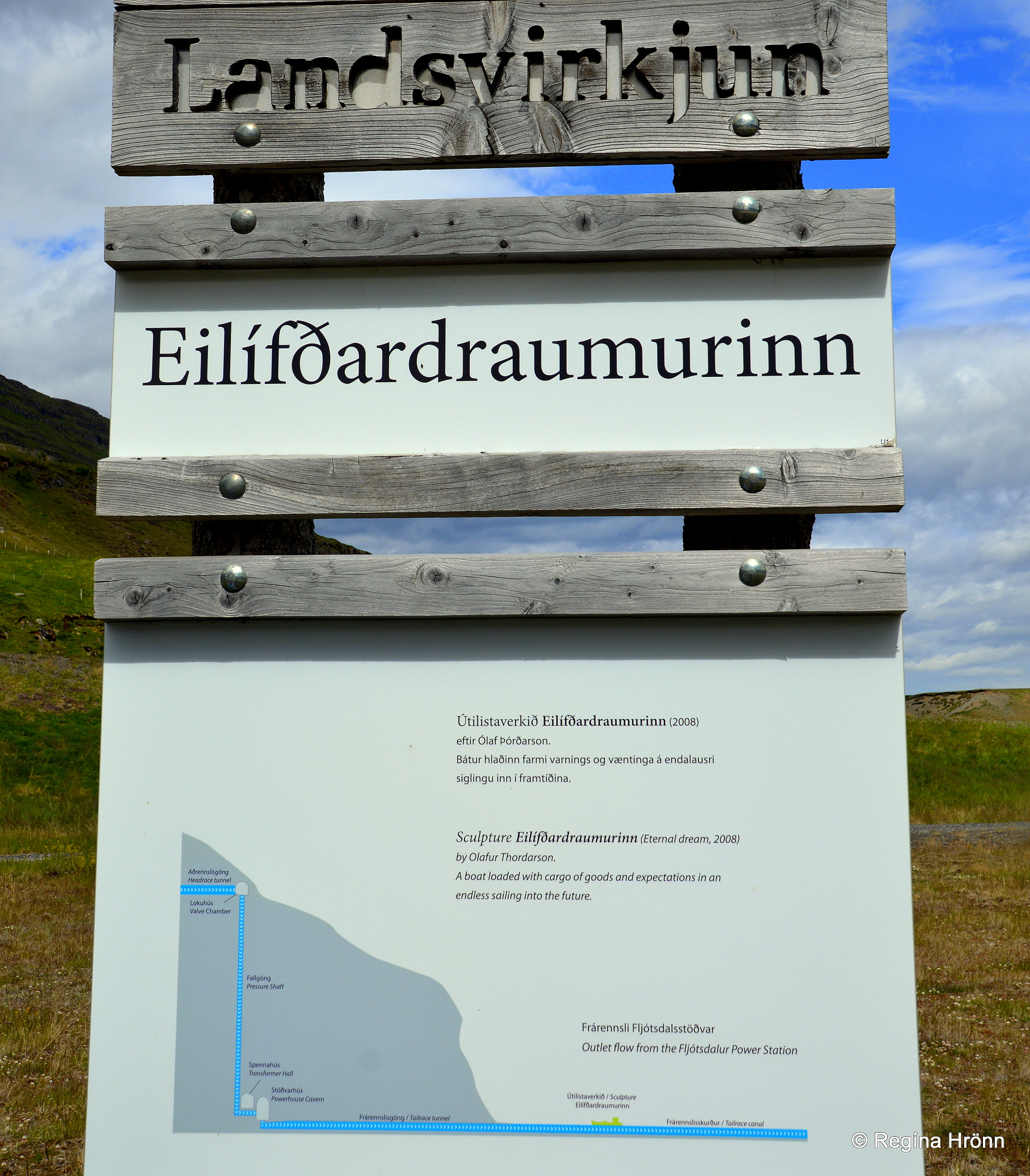

Now, let’s drive to the very end of the road and visit the past.
Óbyggðasetrið – the Wilderness Center
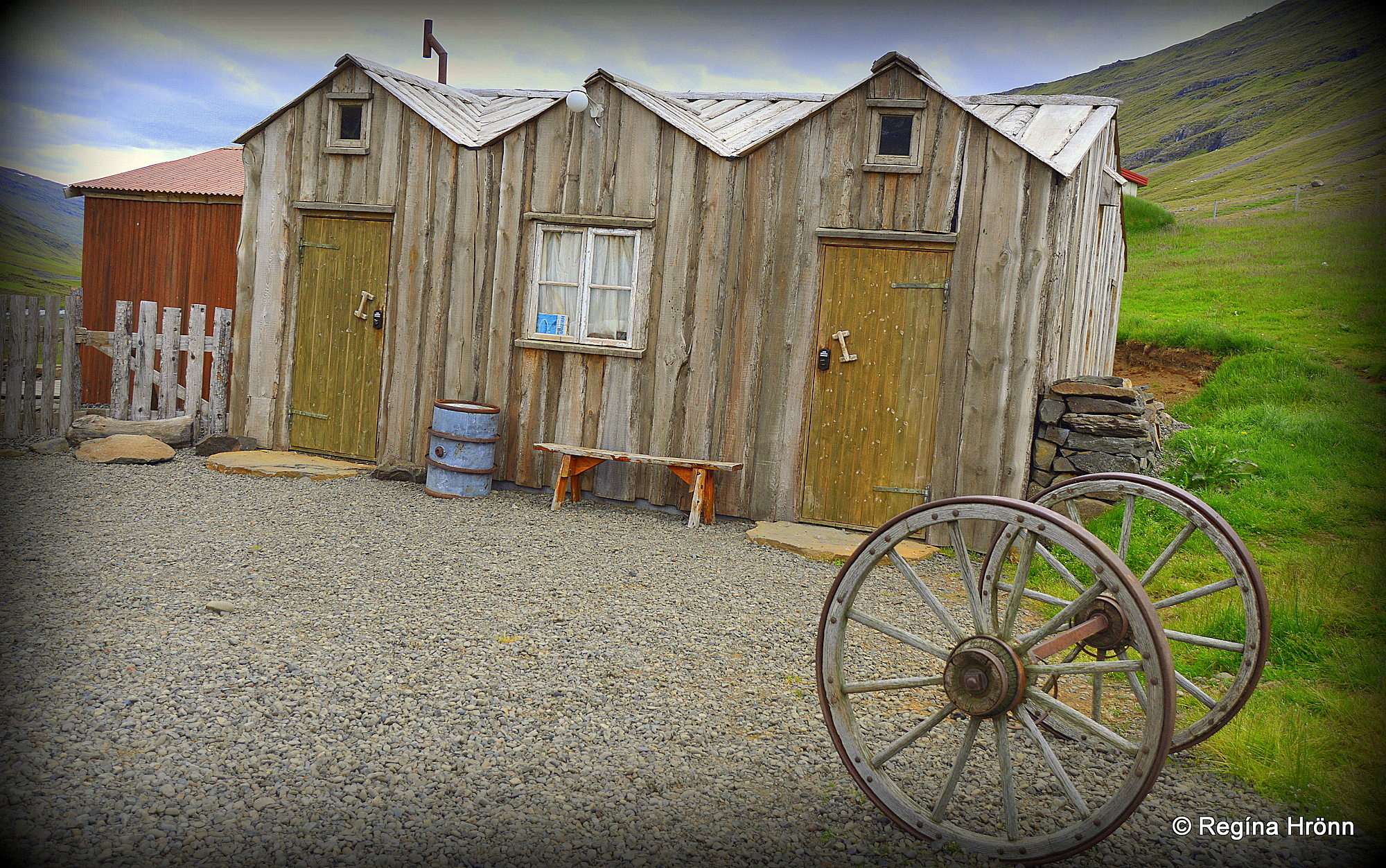

The bathhouse at the Wilderness center
Deep in the Fljótsdalur valley in Norðurdalur the road ends. By the end of the road, an interesting museum and accommodation is hidden away. It is called Óbyggðasetrið – the Wilderness Center.
The farm, which is the innermost farm in the Fljótsdalur valley, is called Egilsstaðir, just like the capital of East Iceland which is located a little less than 60 km away in Fljótsdalur.
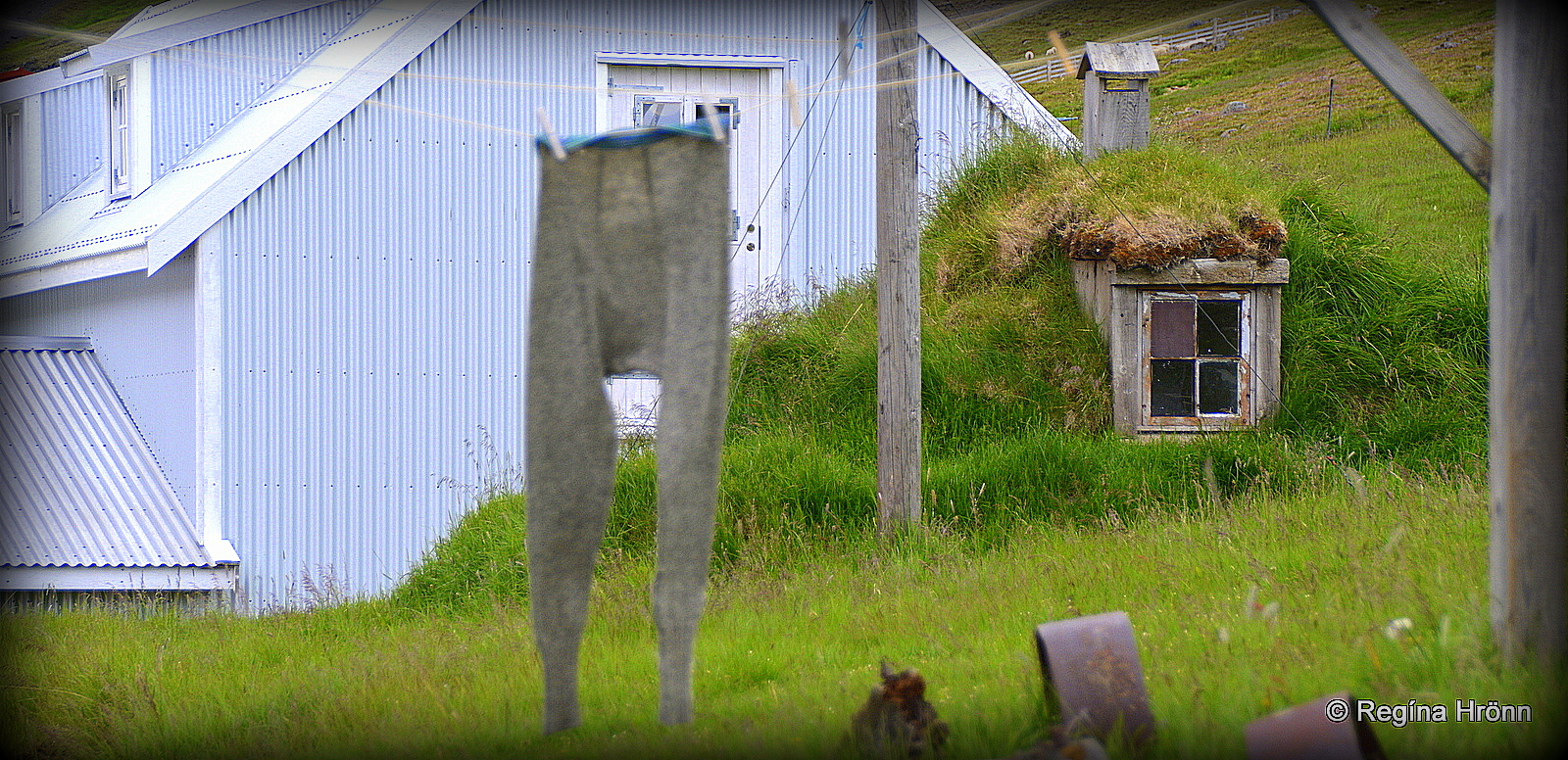

The Wilderness center
Visiting the Wilderness Center is like stepping into the past as the farm has been remade in the original style of the last century.
At the exhibition of the Wilderness Center, you will see how the farmers lived and survived so far in the valley.
From 1907-1927, 14 siblings were born here at Egilsstaðir. Nine of the siblings remained at Egilsstaðir farm and never married. The siblings were renowned for their artistry and handiwork.
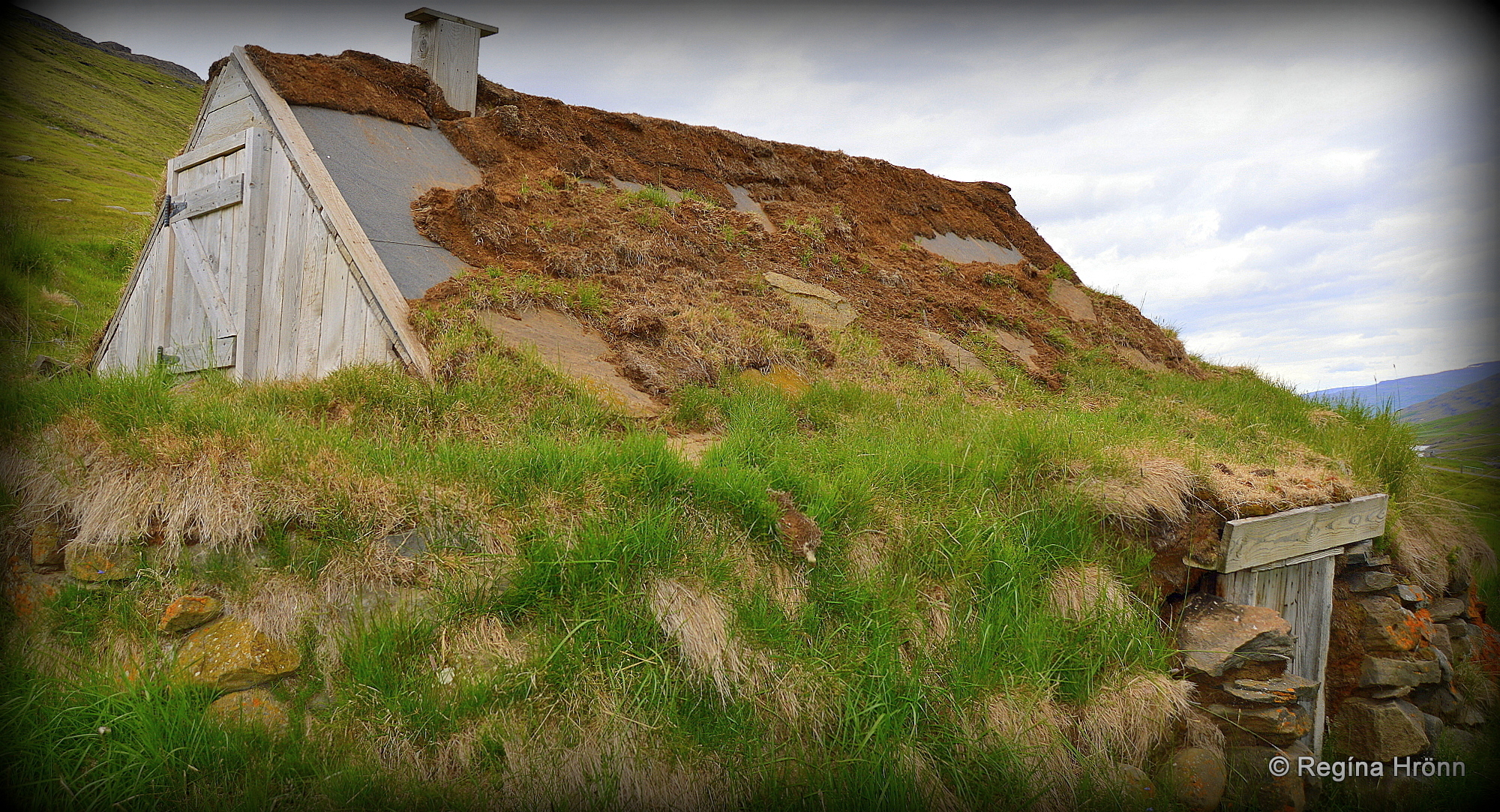

A turf outhouse
At the Wilderness Center, you will be able to experience sleeping in a remake of baðstofa – which was the living room and bedroom in the old turf houses.
That is what drew me to visit this farm so deep in the Fljótsdalur valley, as I wanted to see the baðstofa.
You can also experience crossing the glacial river in a small traditional wooden cableway as was customary in this area in the olden times.
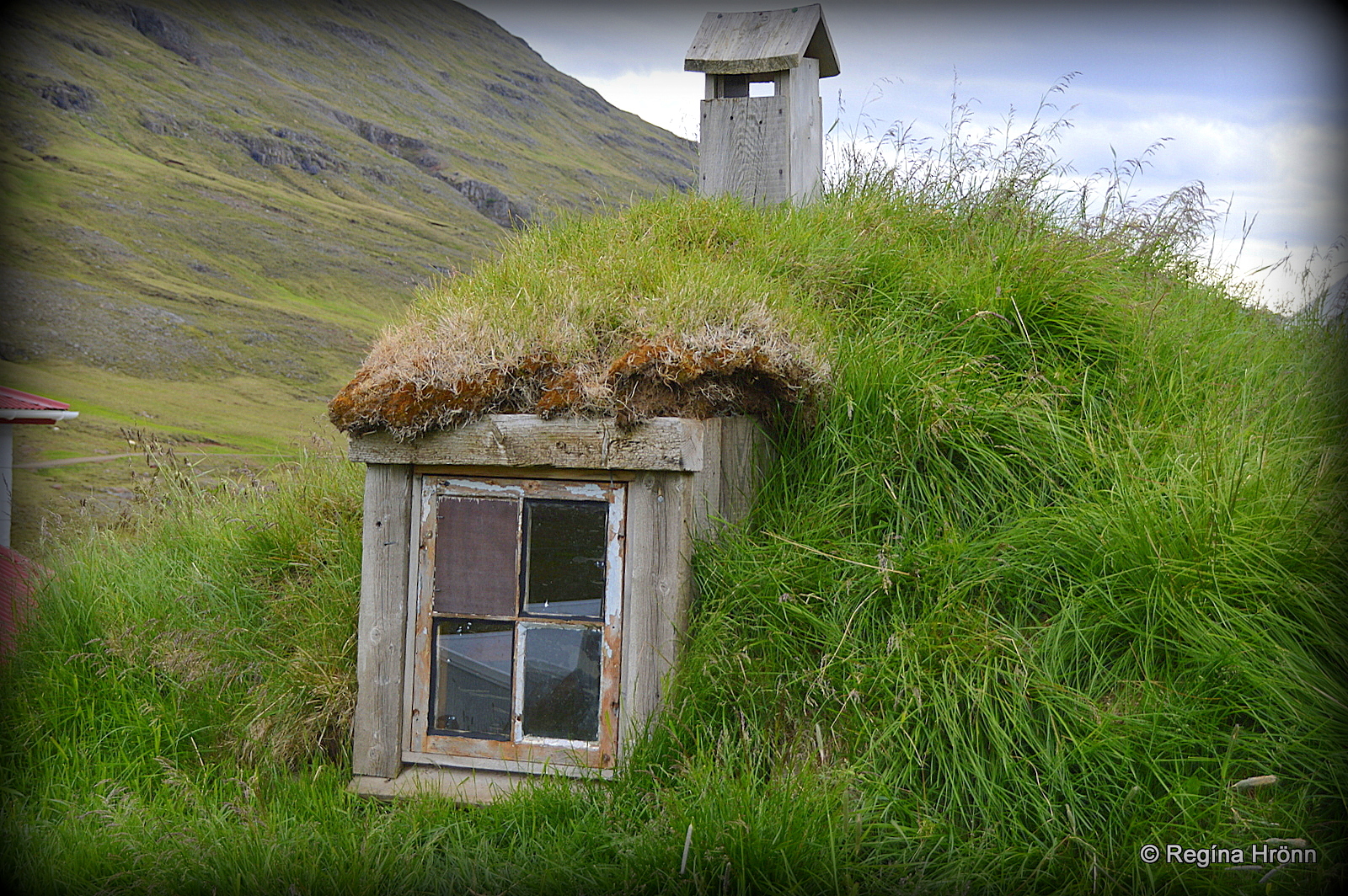

A turf outhouse at the Wilderness center
This is as far as we can go as here the road ends, and further on is the wilderness of Iceland, so now we turn back.
Be on the lookout for turf outhouses in this area, there are several dilapidated outhouses, but also a set of beautifully still functional turf outhouses at Langhús farm.
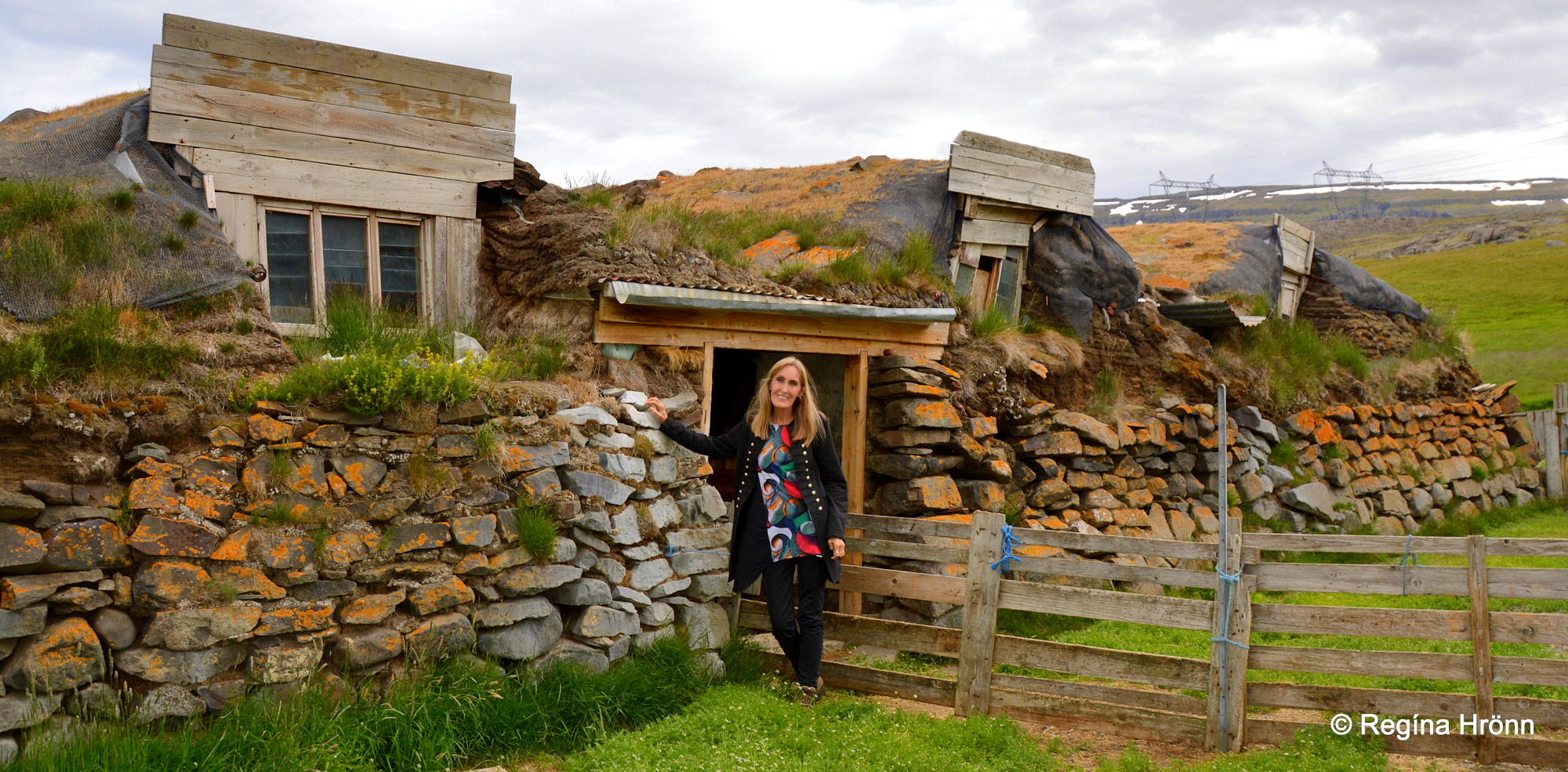

The old turf outhouses at Langhús farm
In this travel-blog I have been showing you the pearls of Fljótsdalur valley. There are so many beautiful sights in Fljótsdalur valley that I have only been able to give you a preview of each location.
Now, let’s visit the Gem of East Iceland – the spectacular Stuðlagil canyon which is located in the next valley, Jökuldalur – the Glacier valley.
We can also go the other way and visit the Idyllic Seyðisfjörður in East Iceland – the One with the Blue Church.
Have a lovely time in East Iceland 🙂
